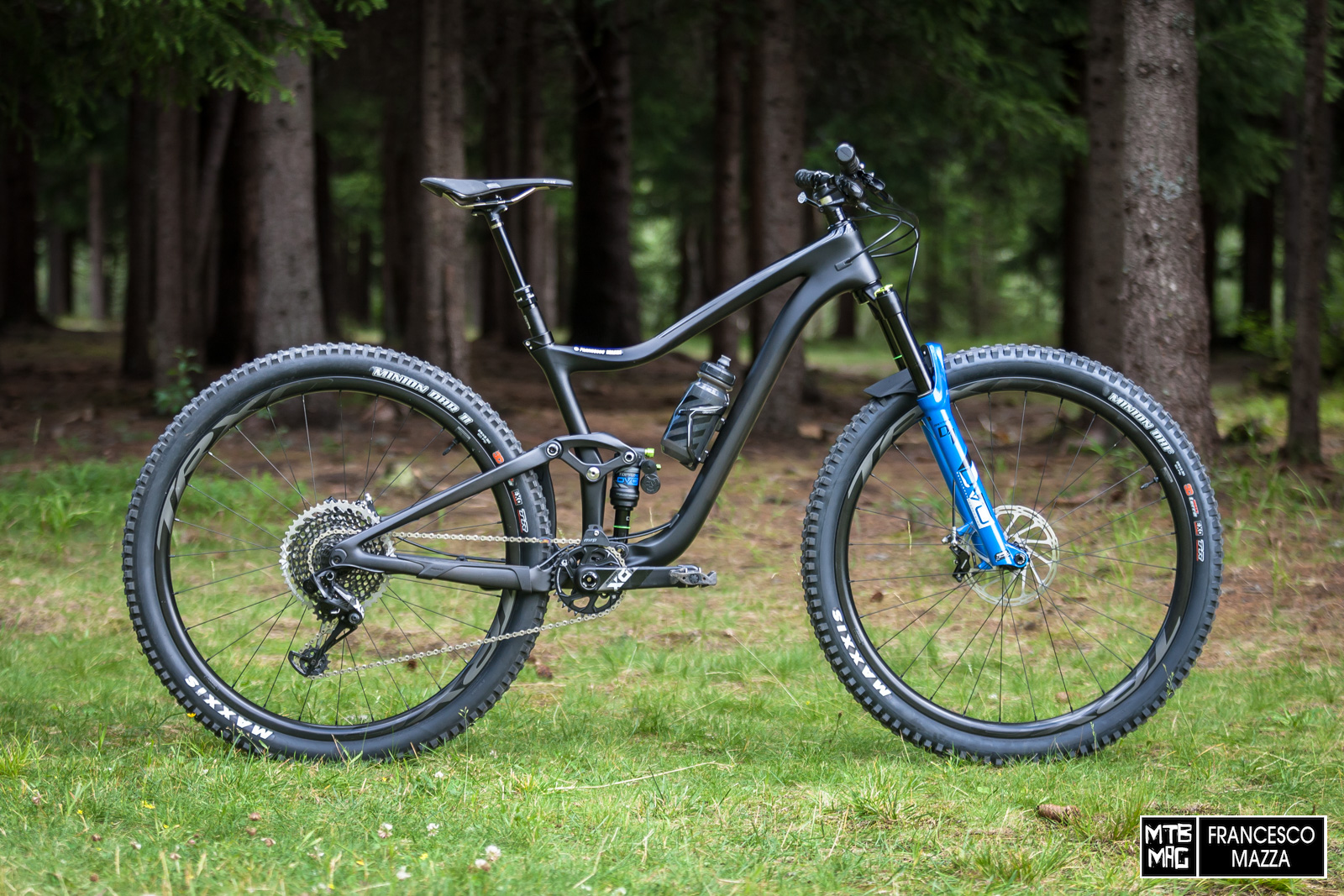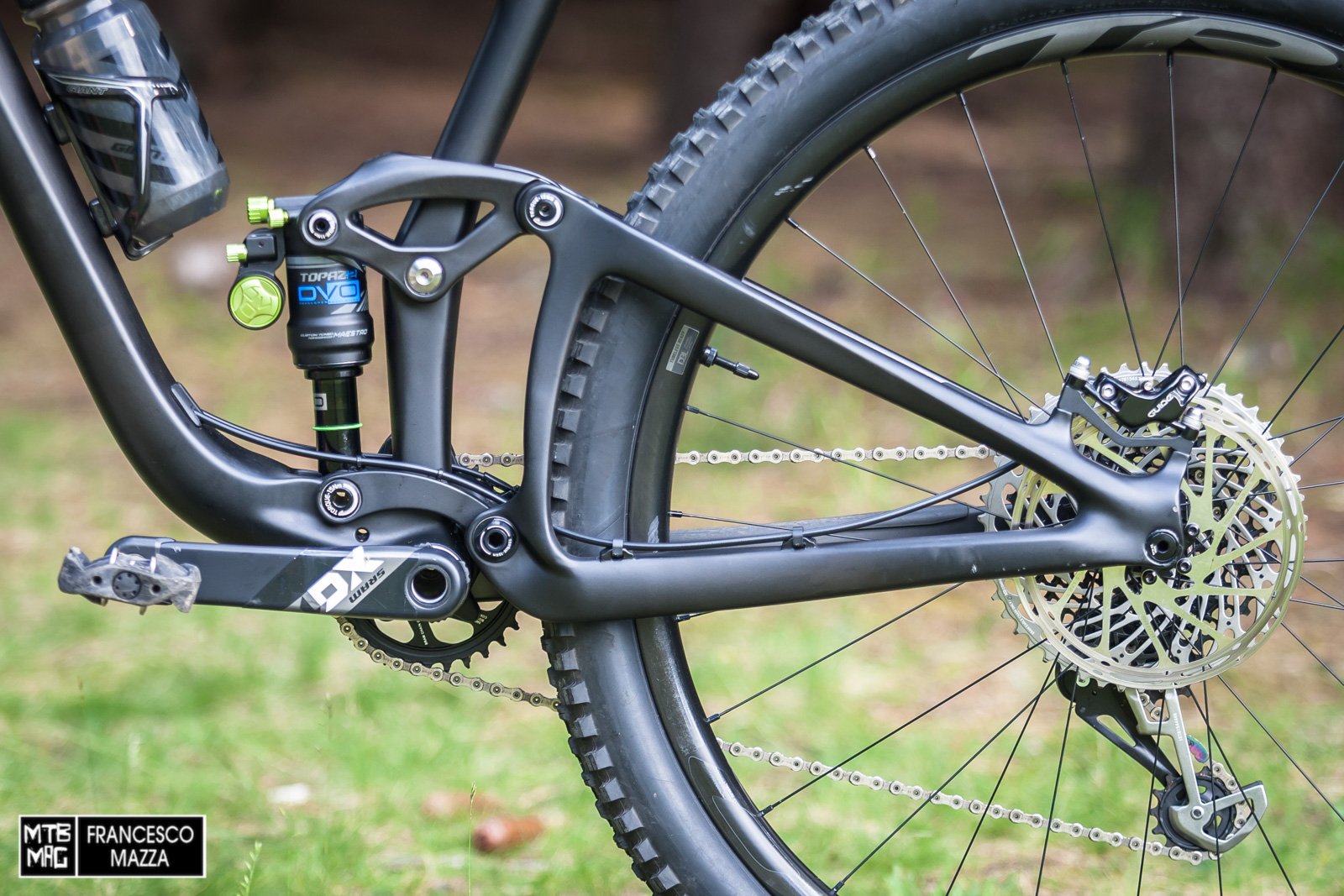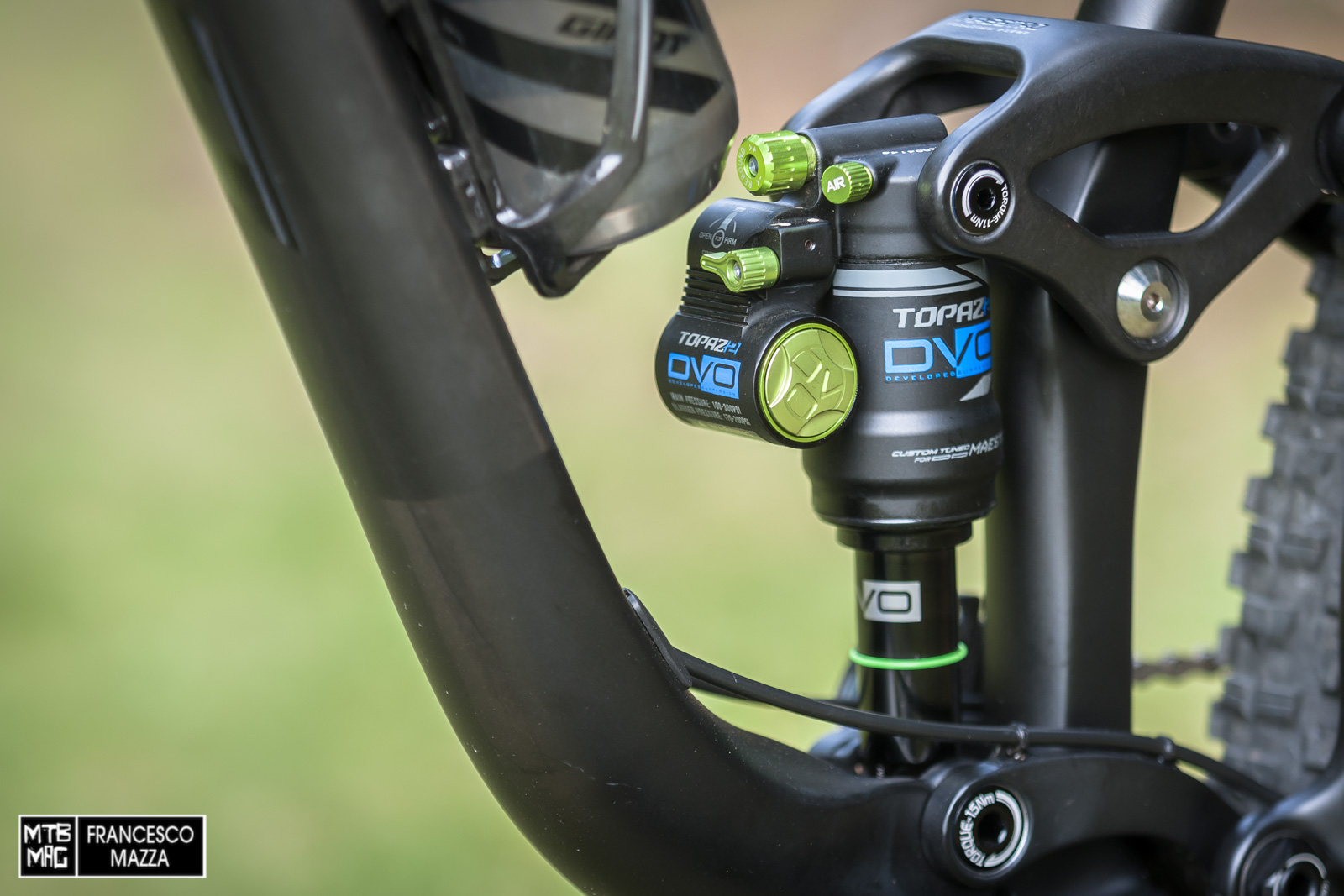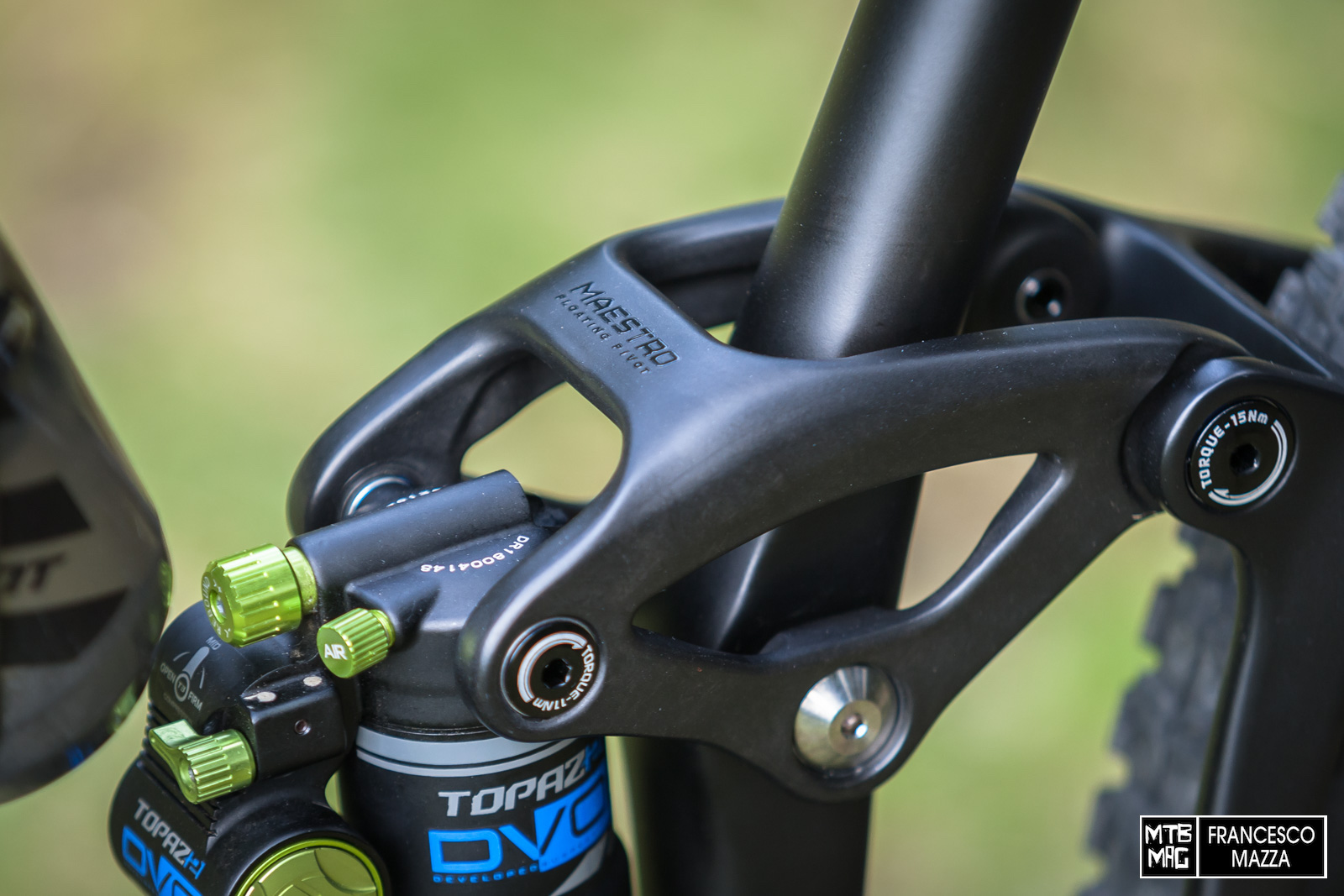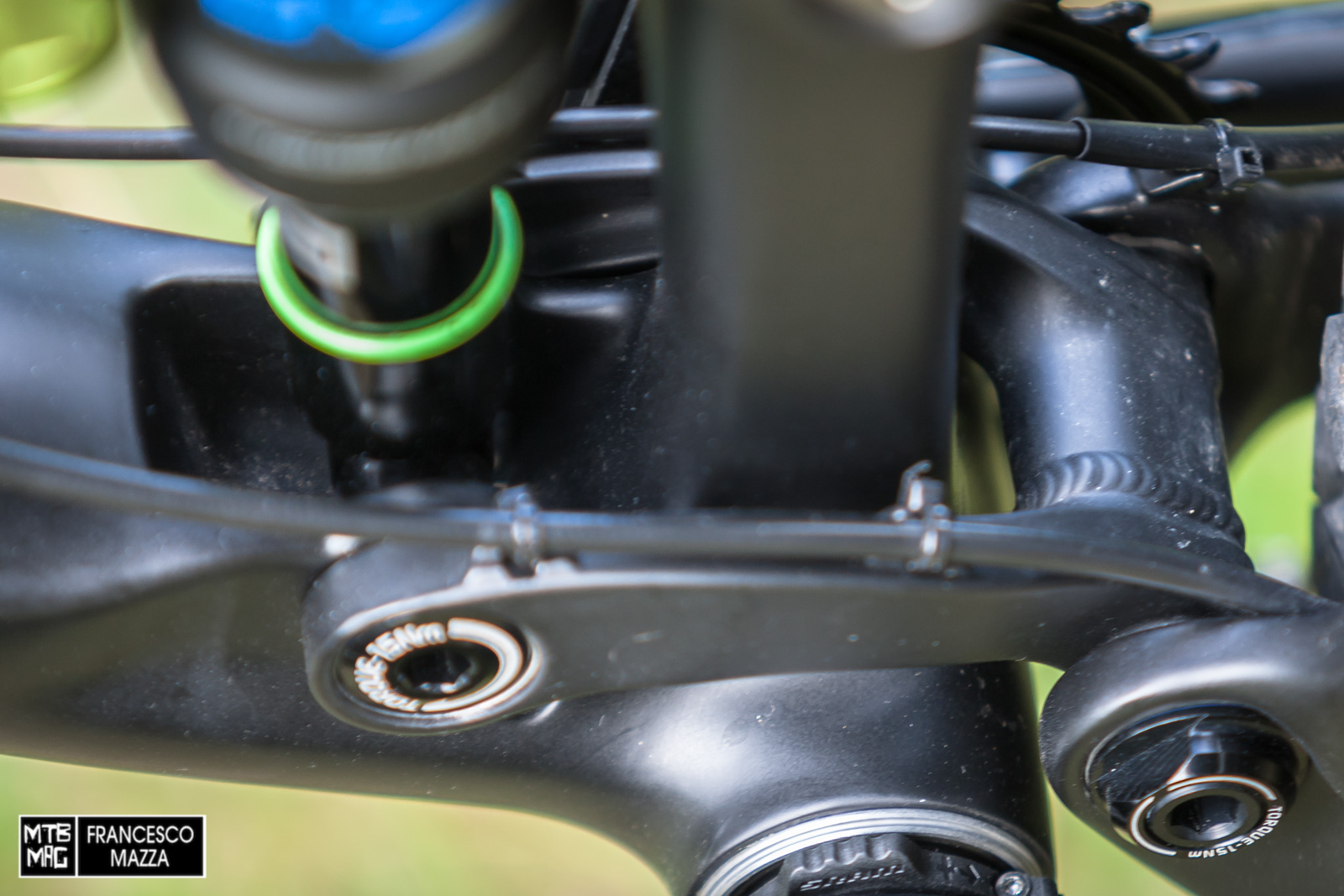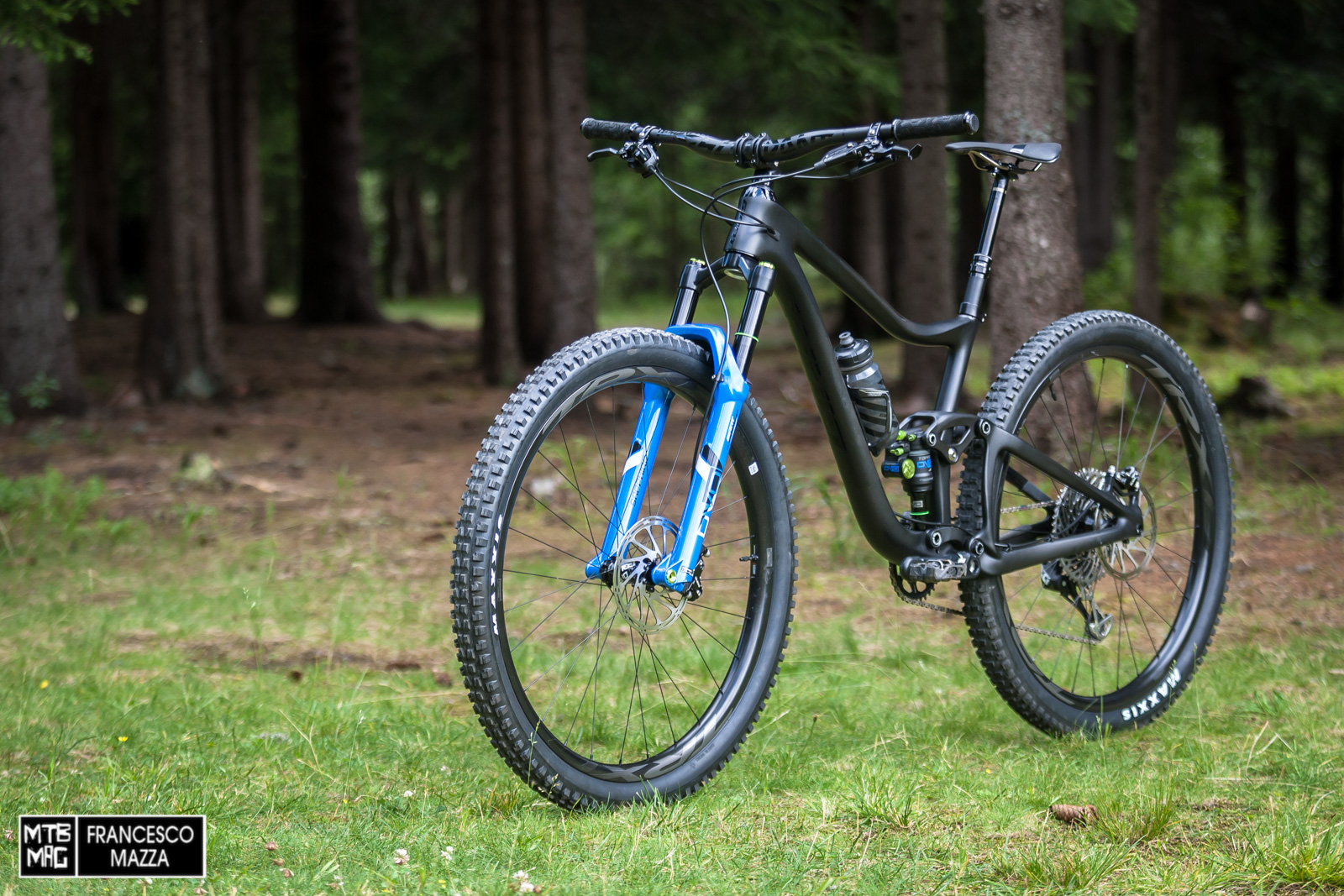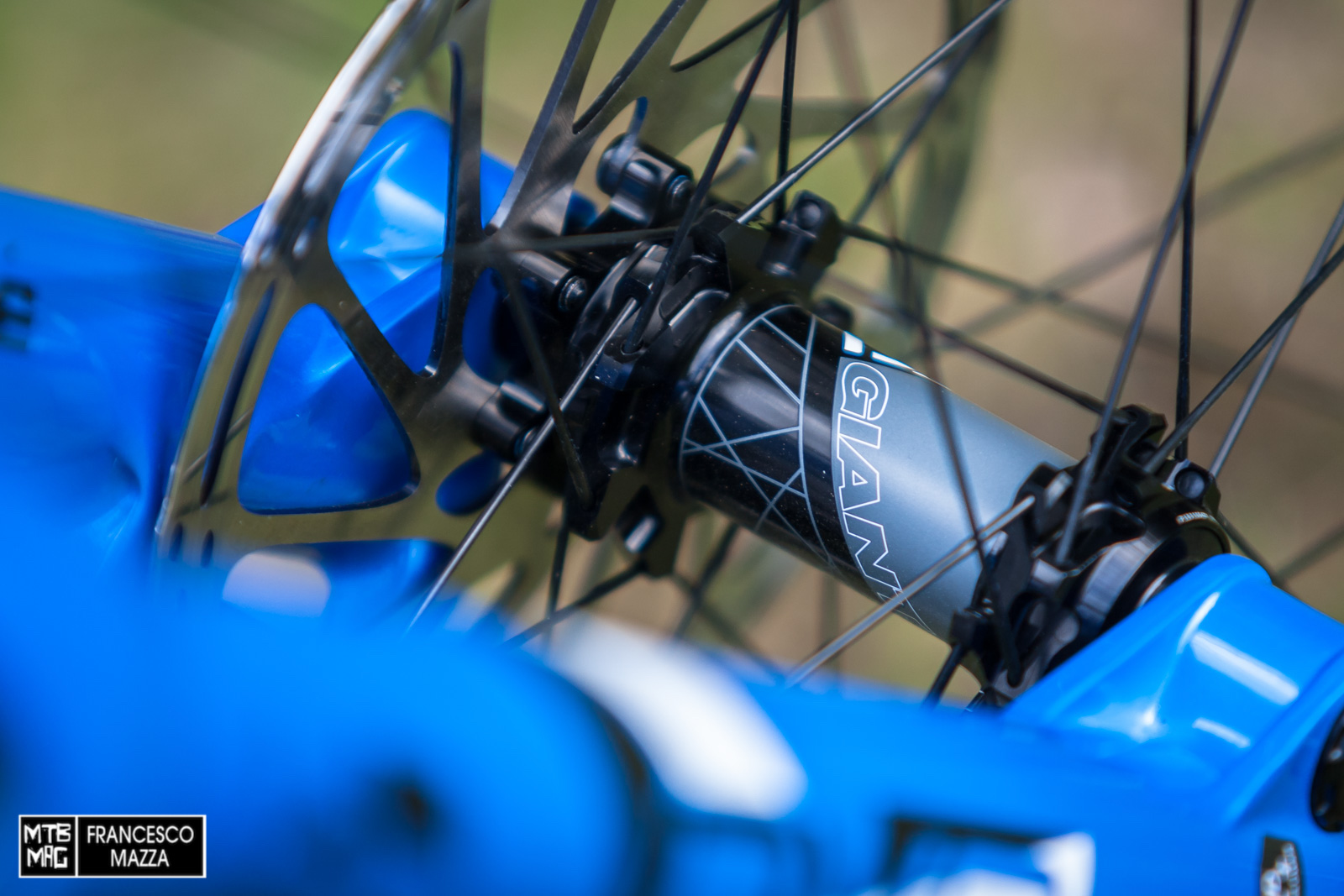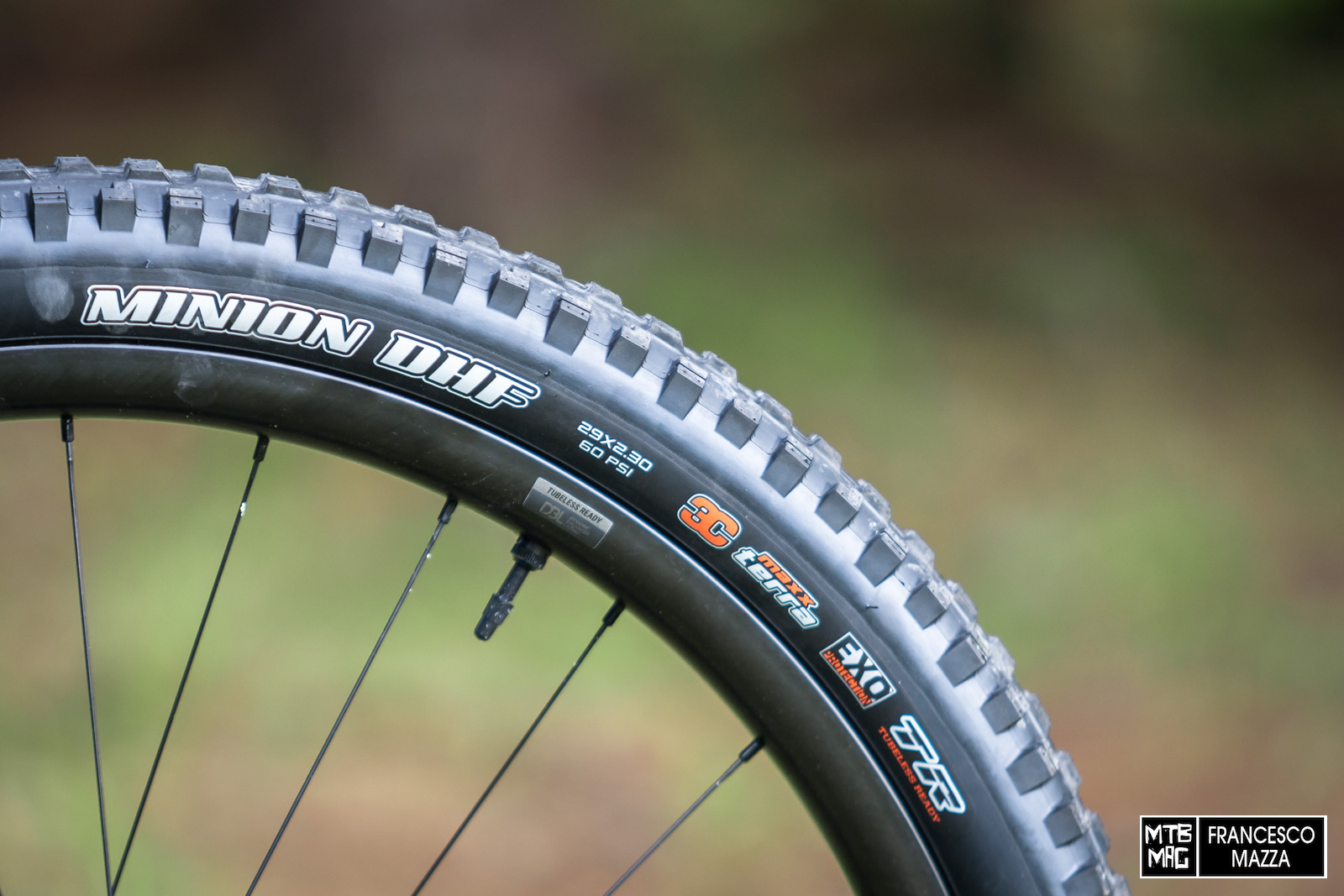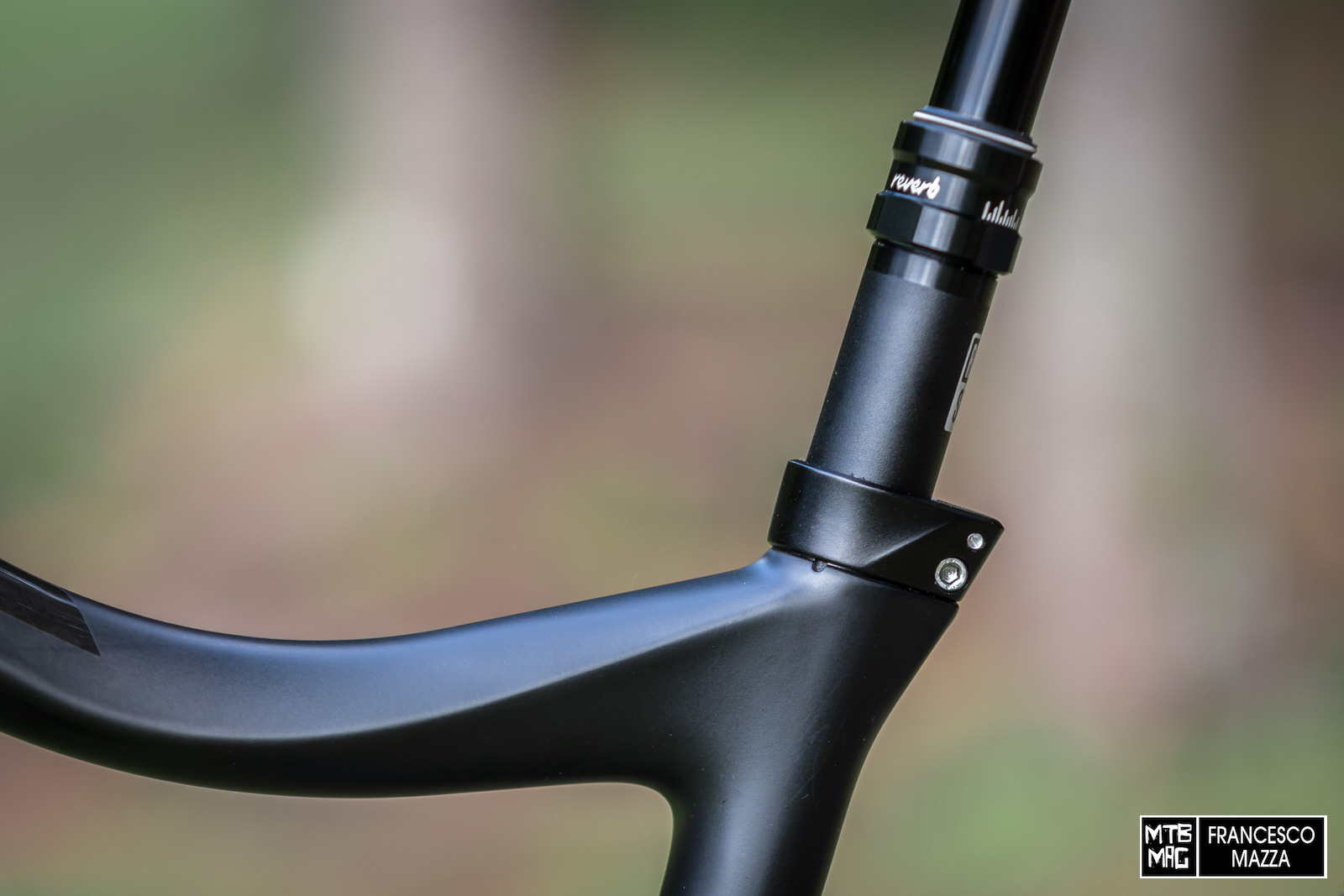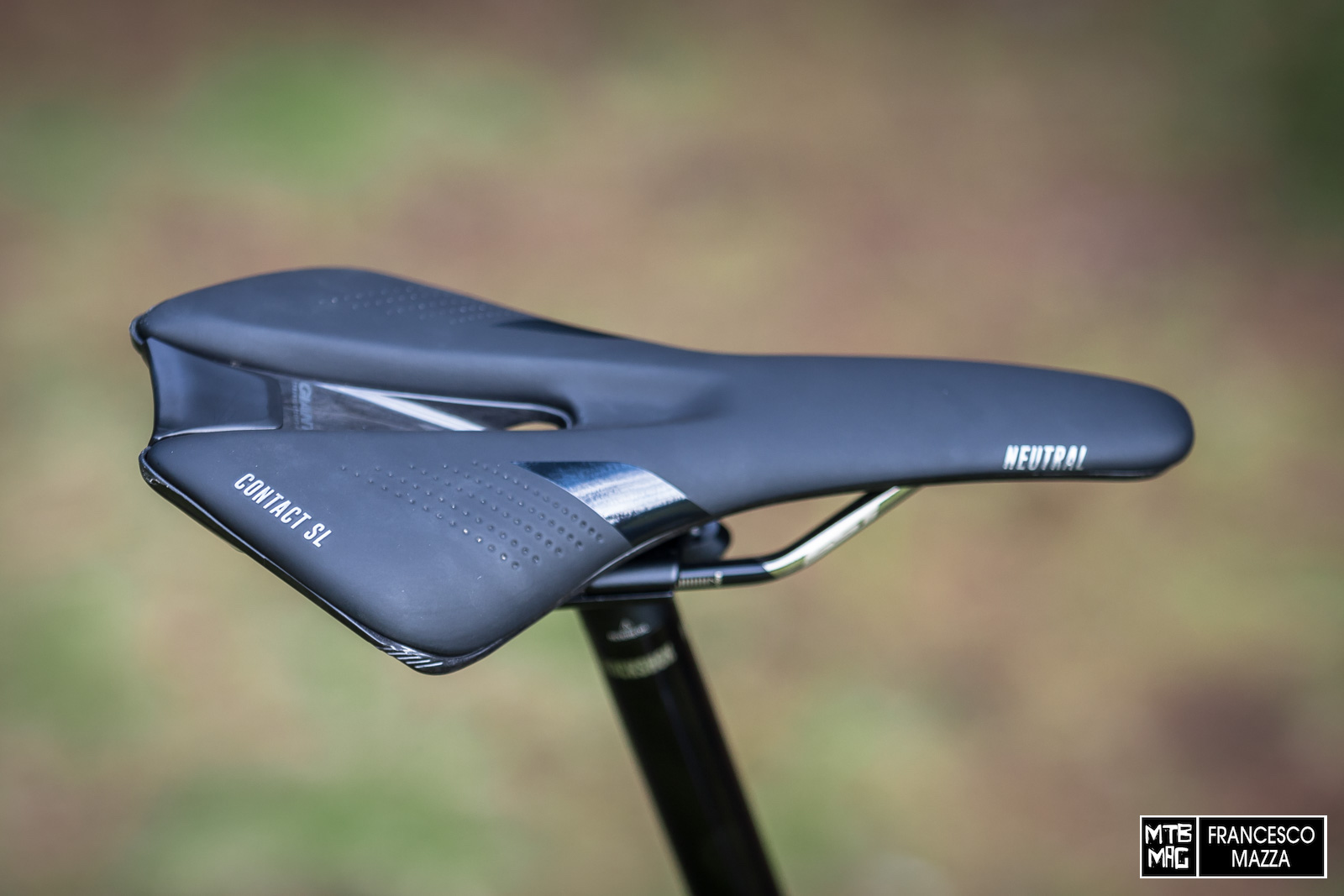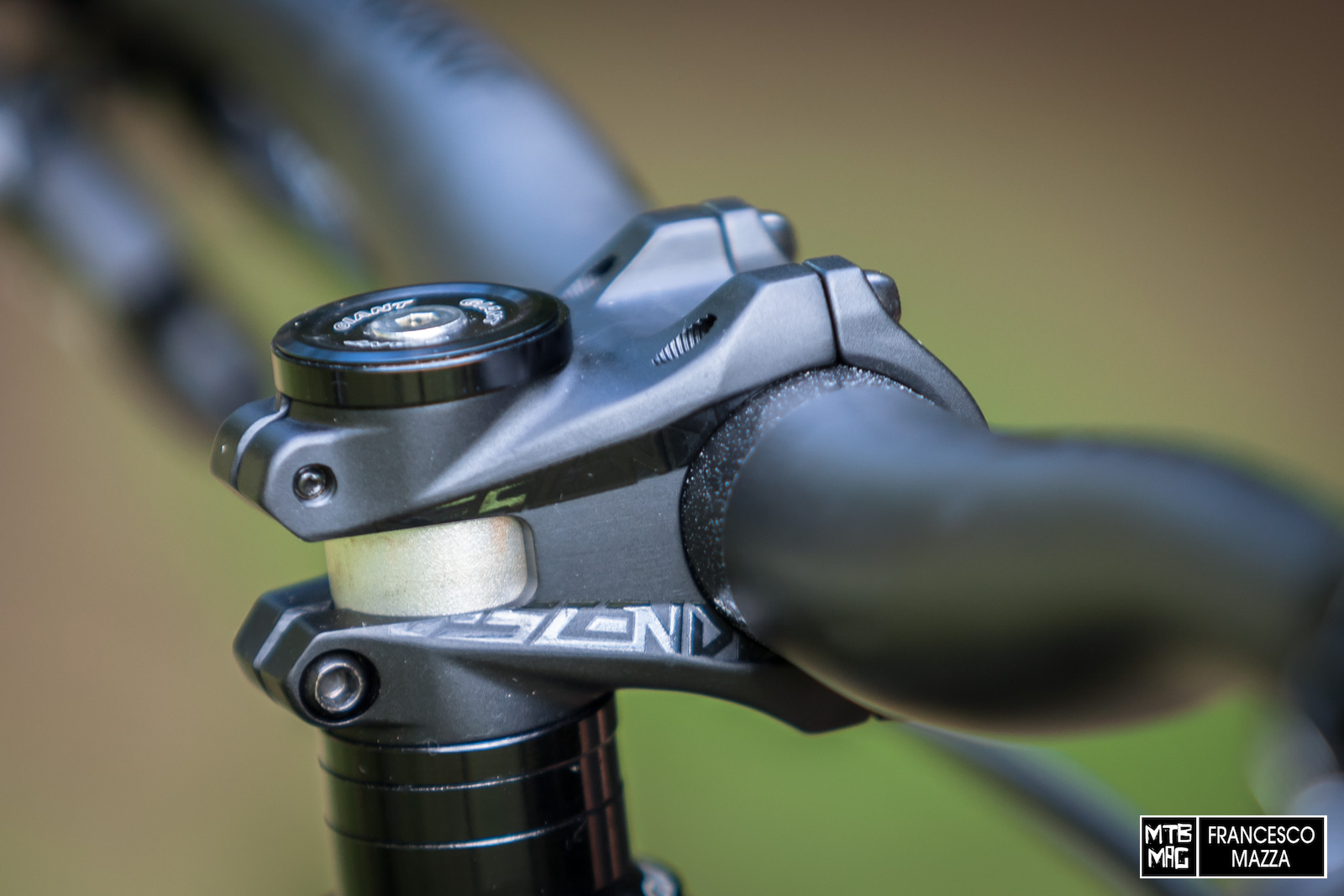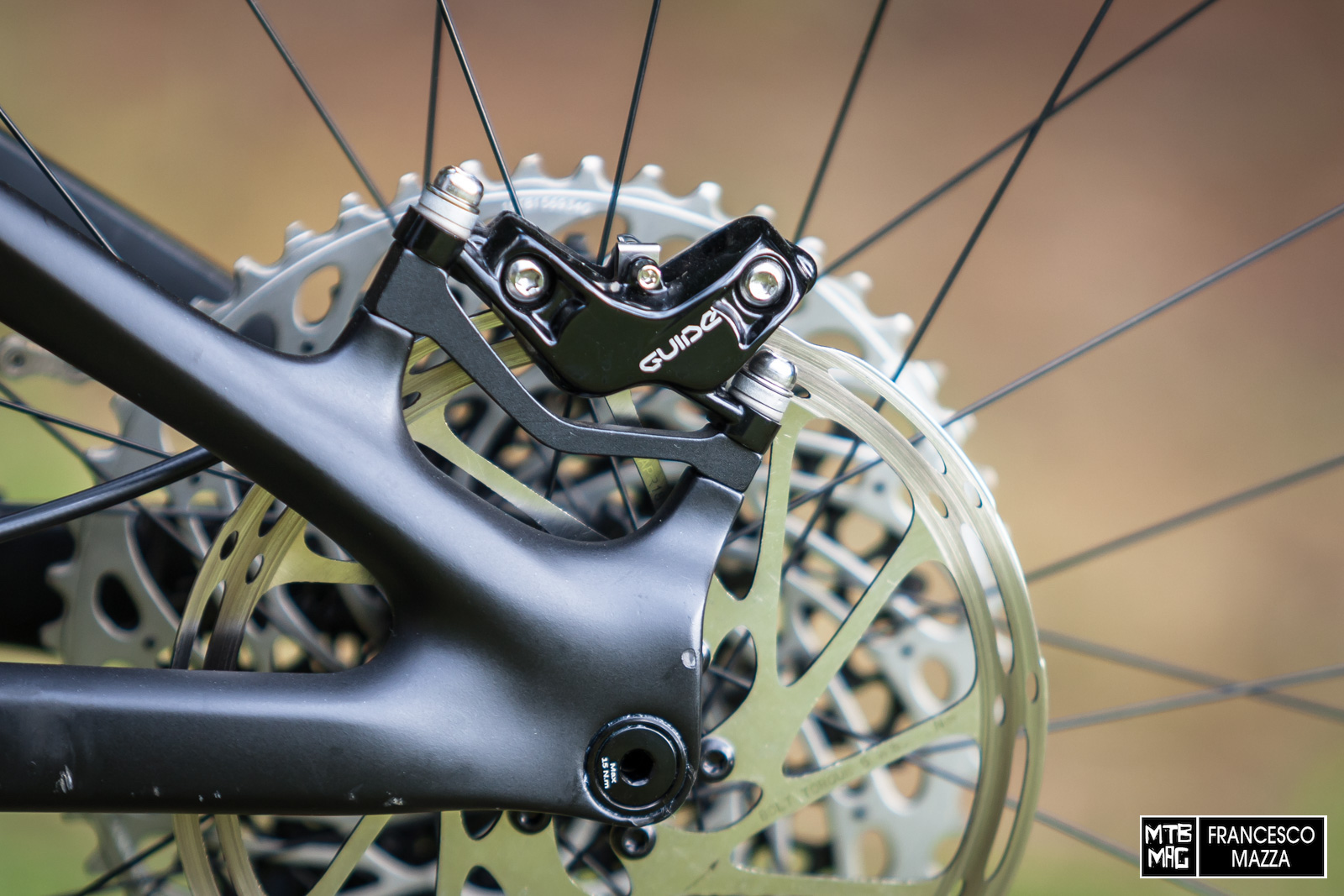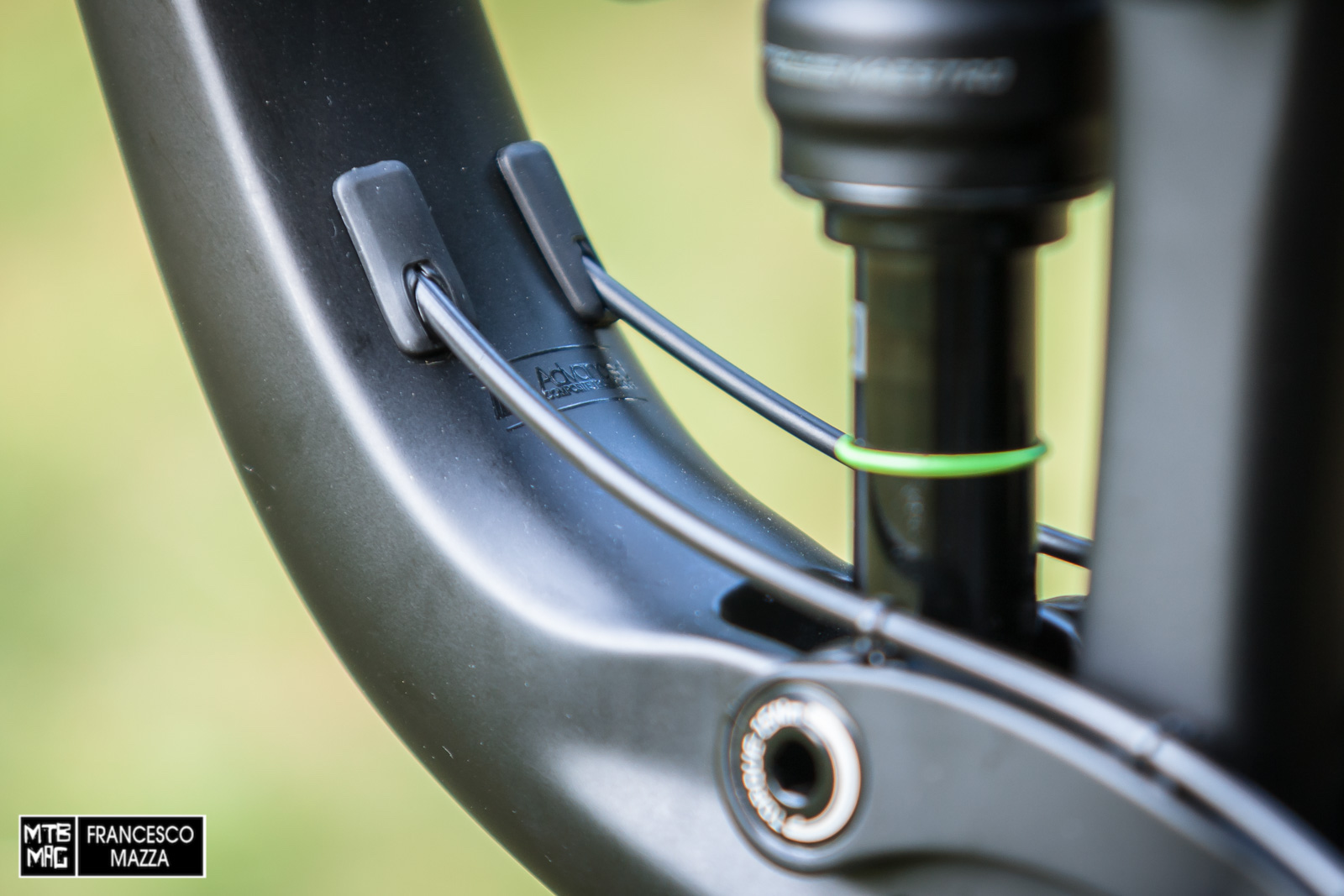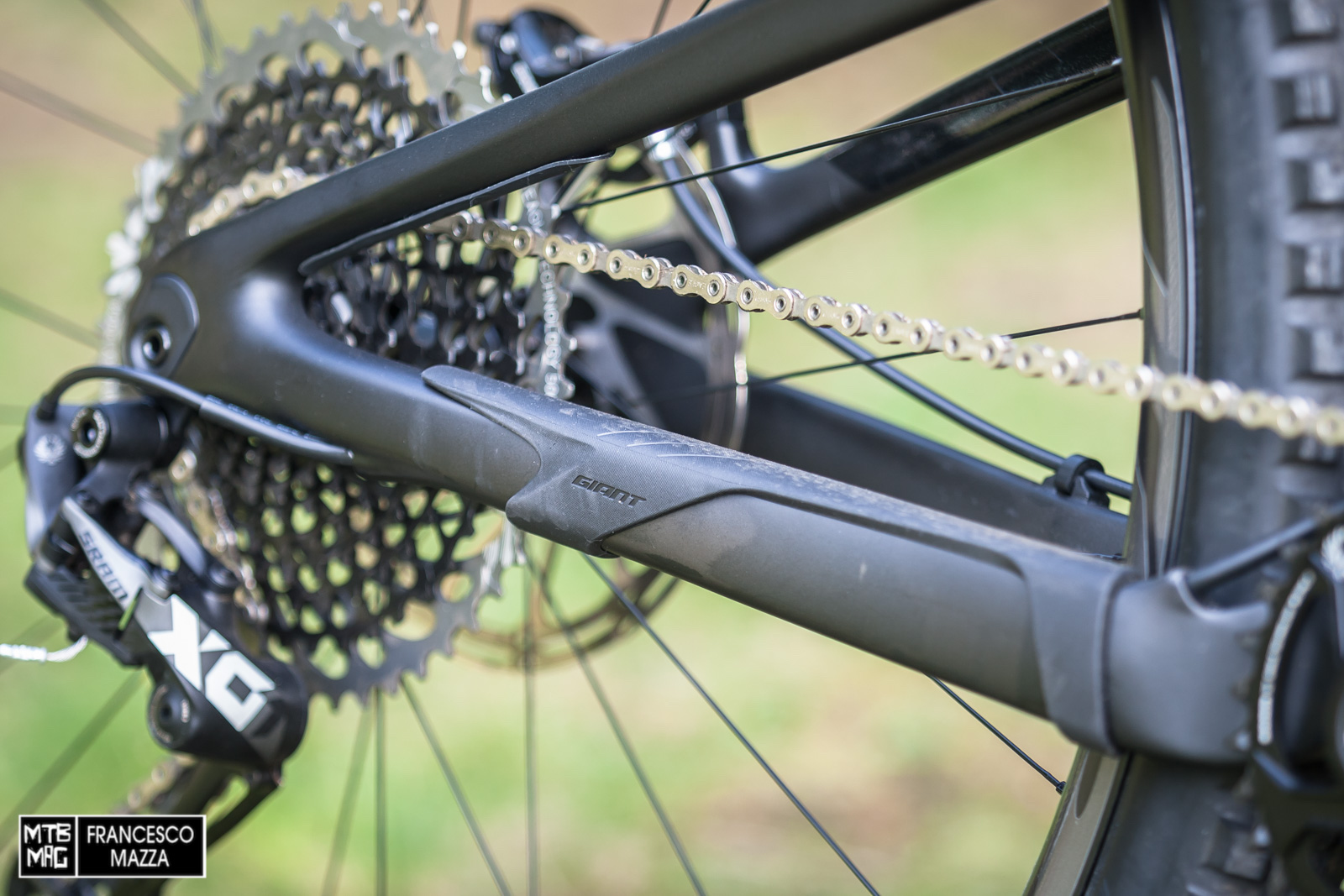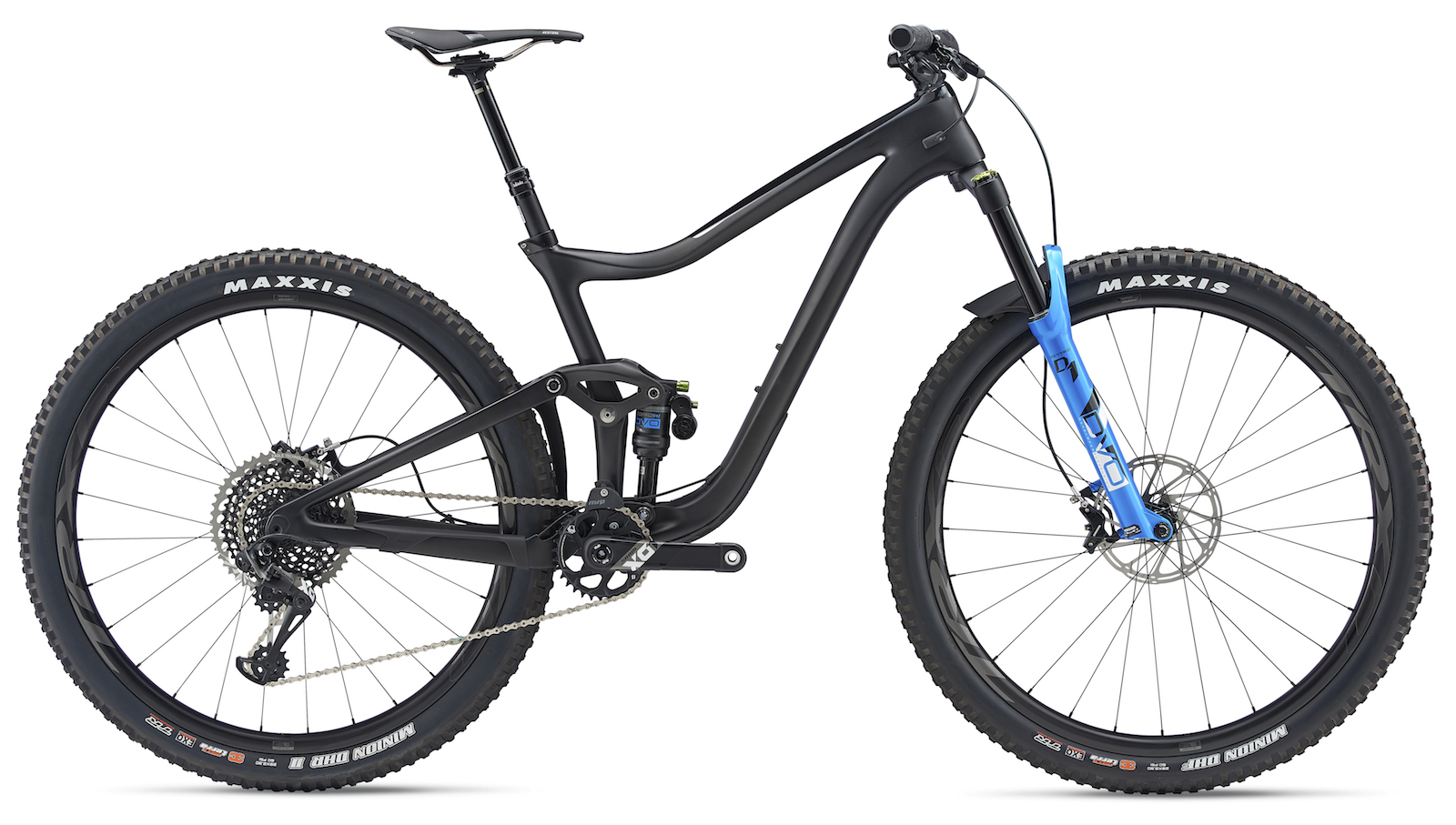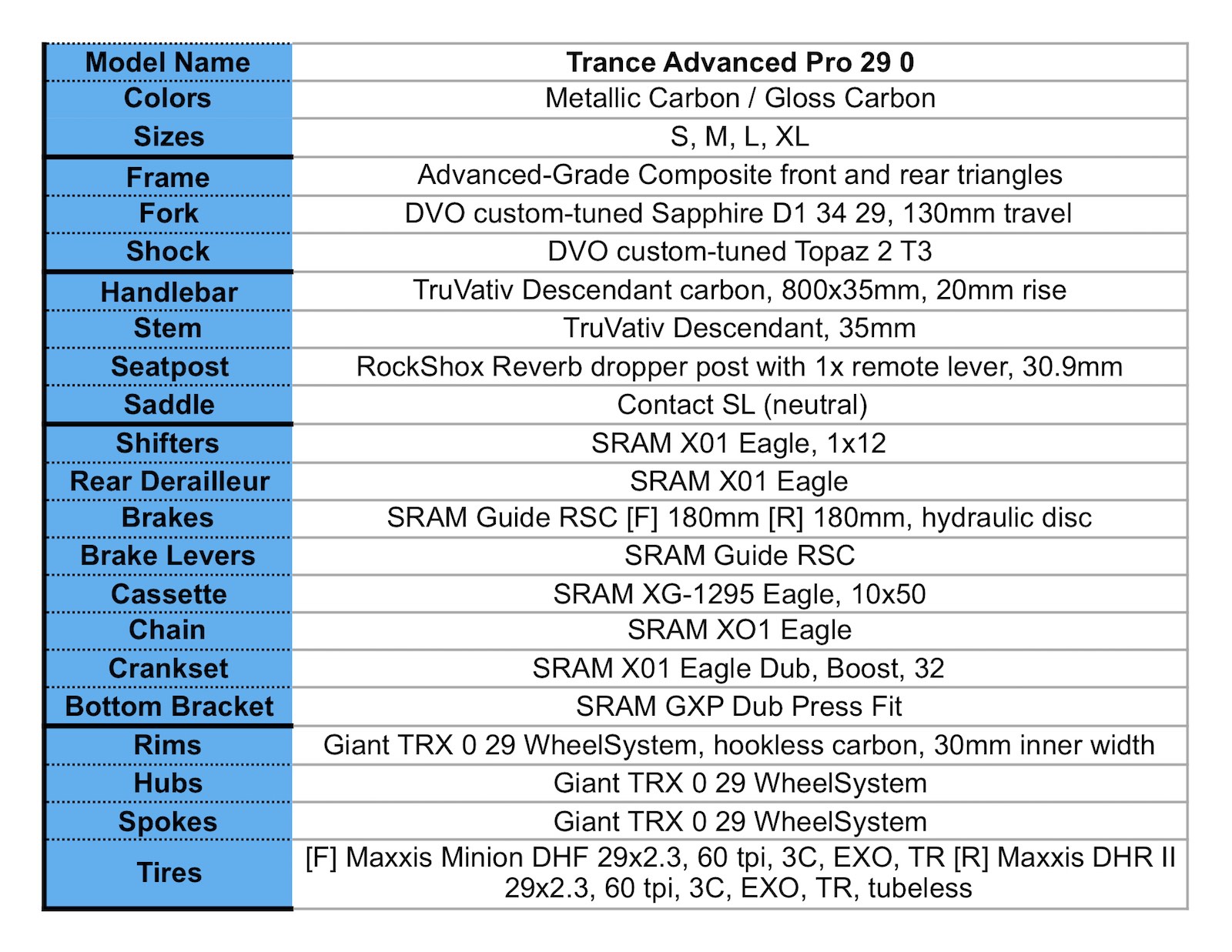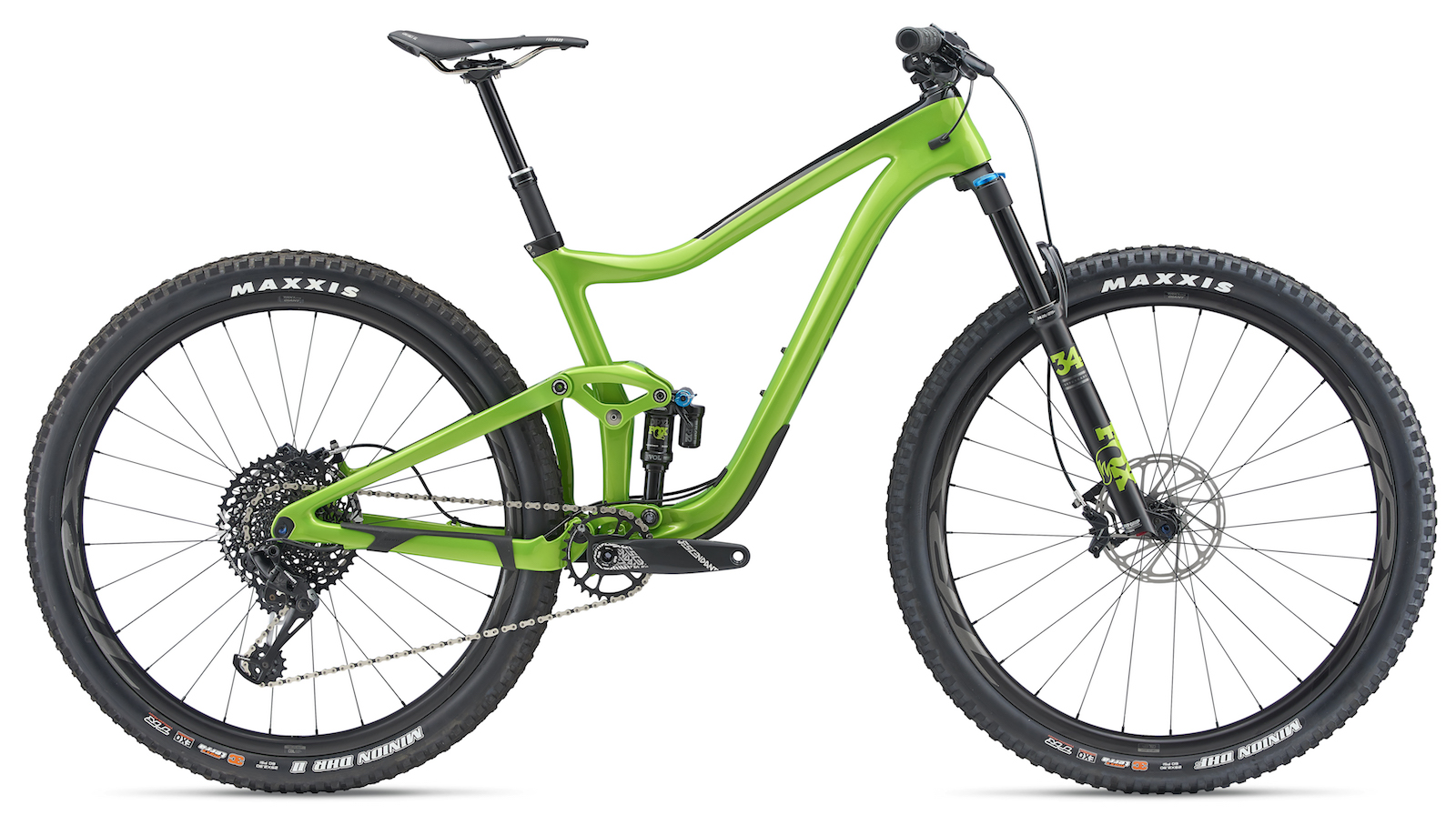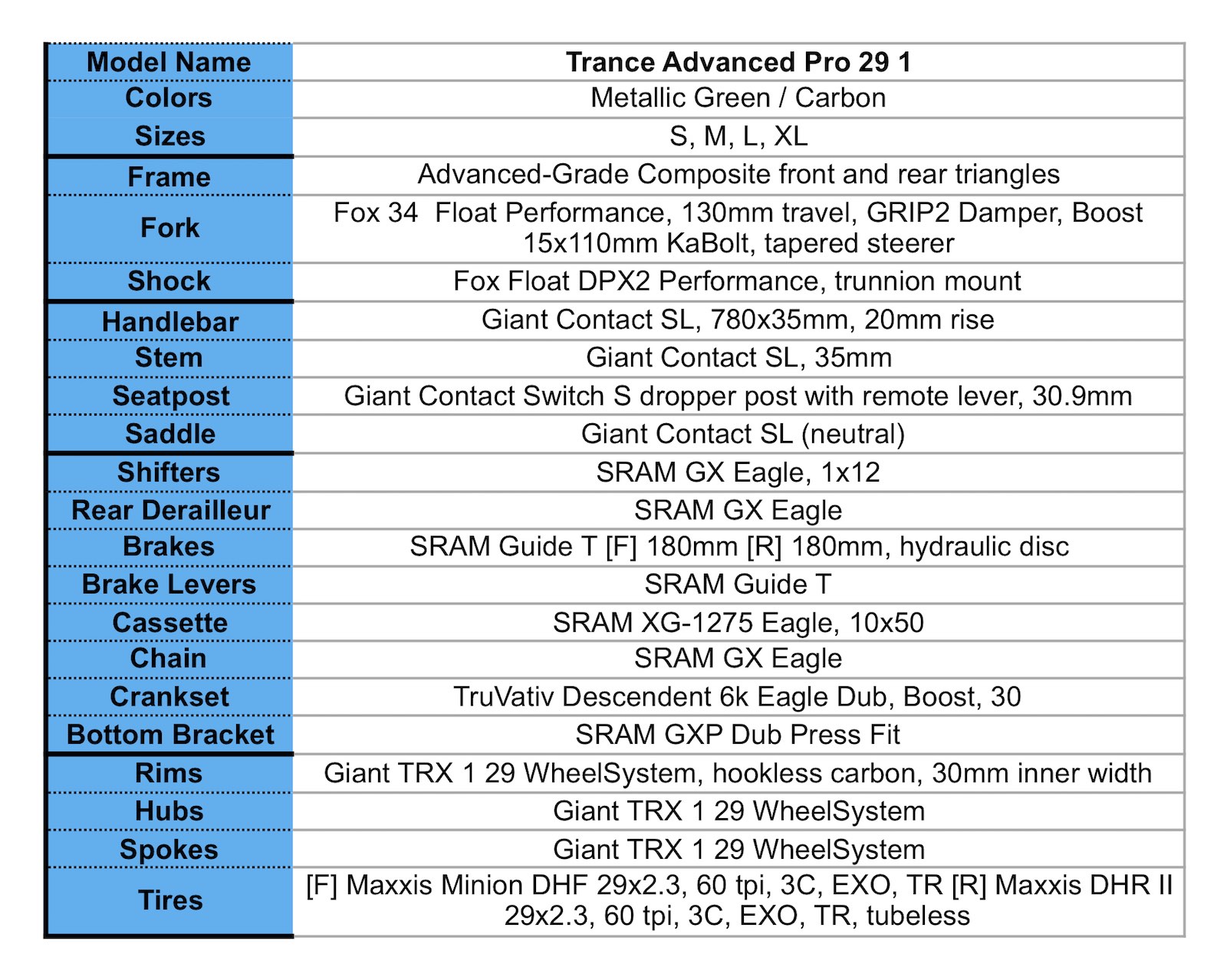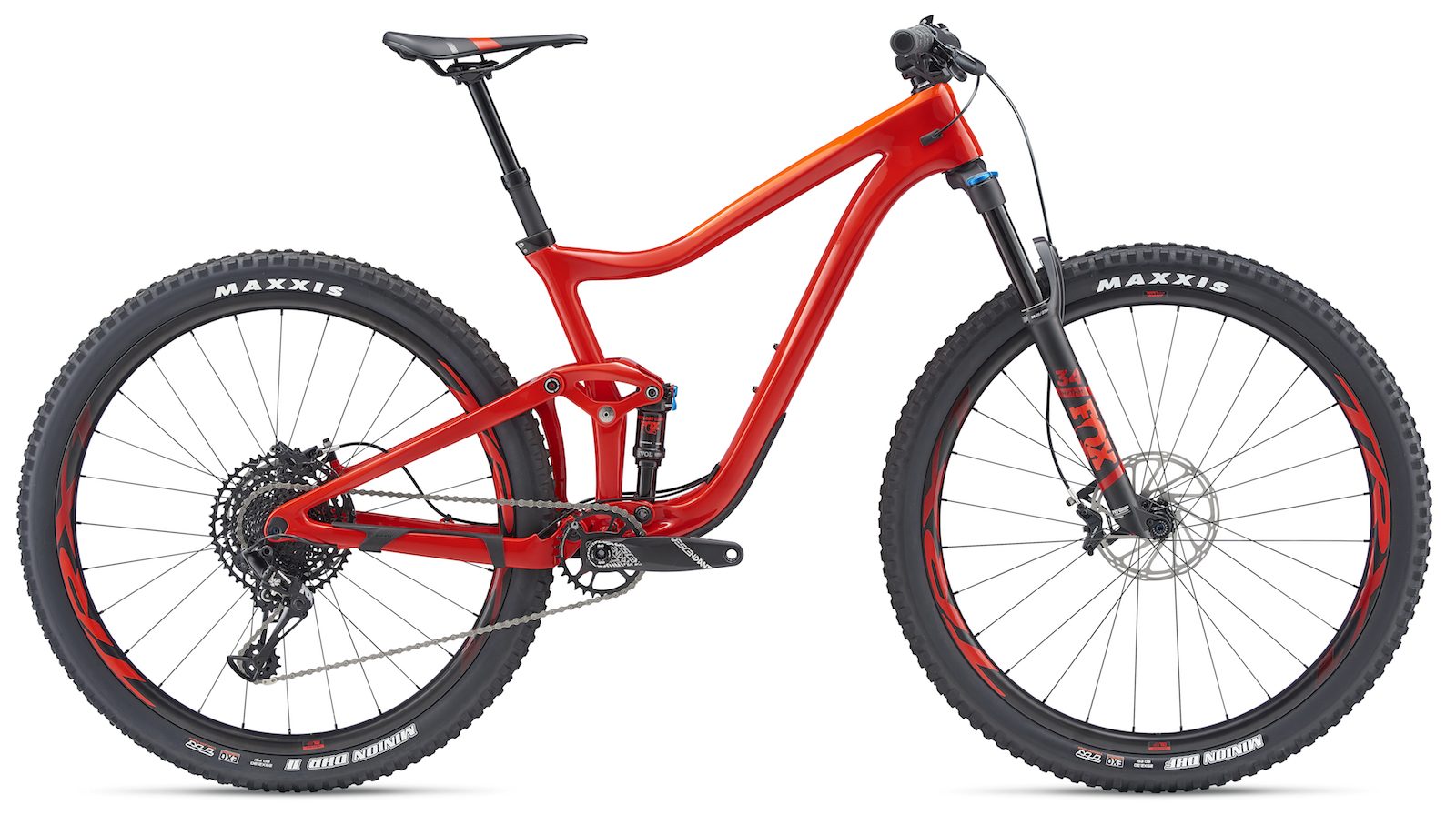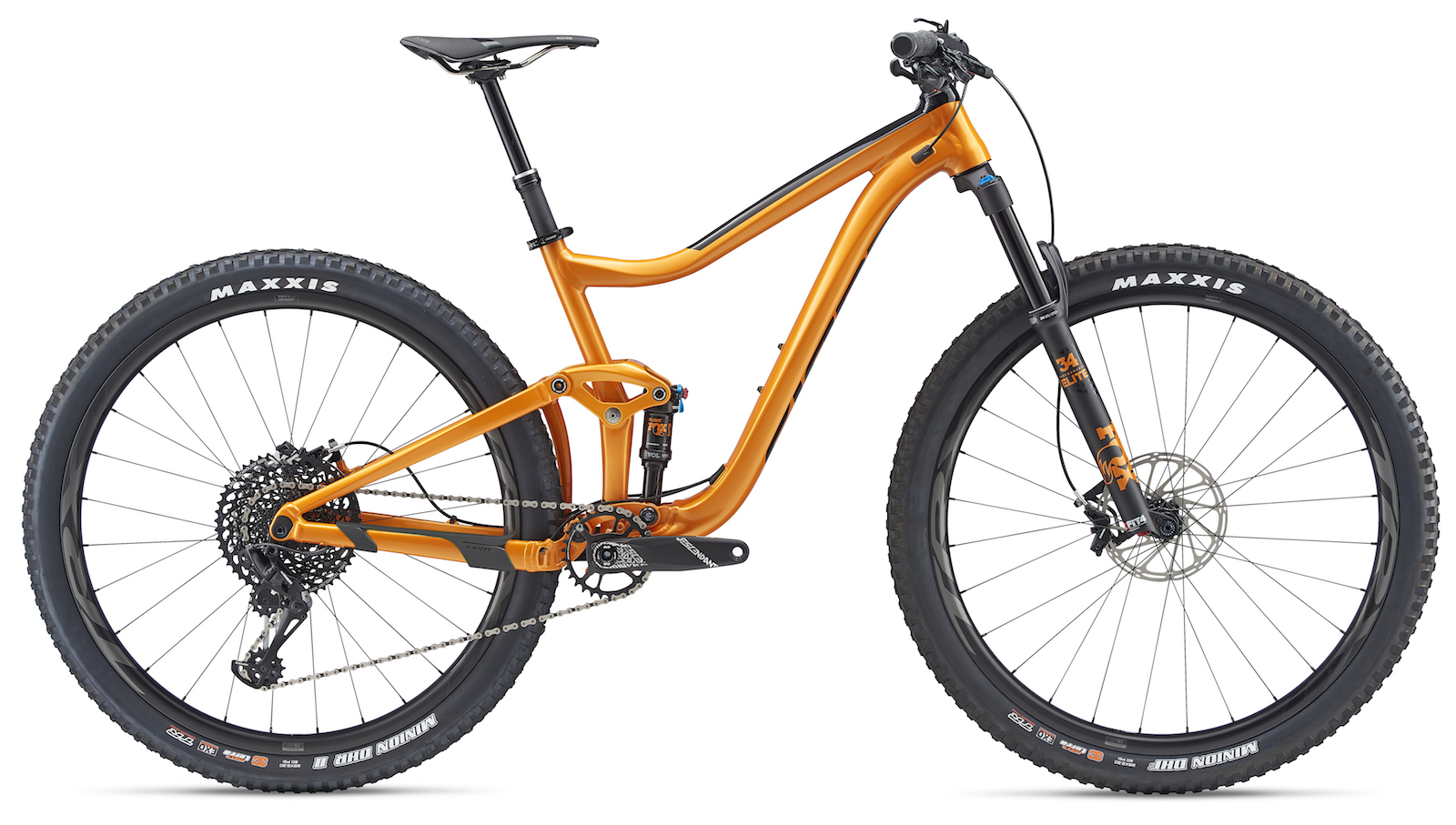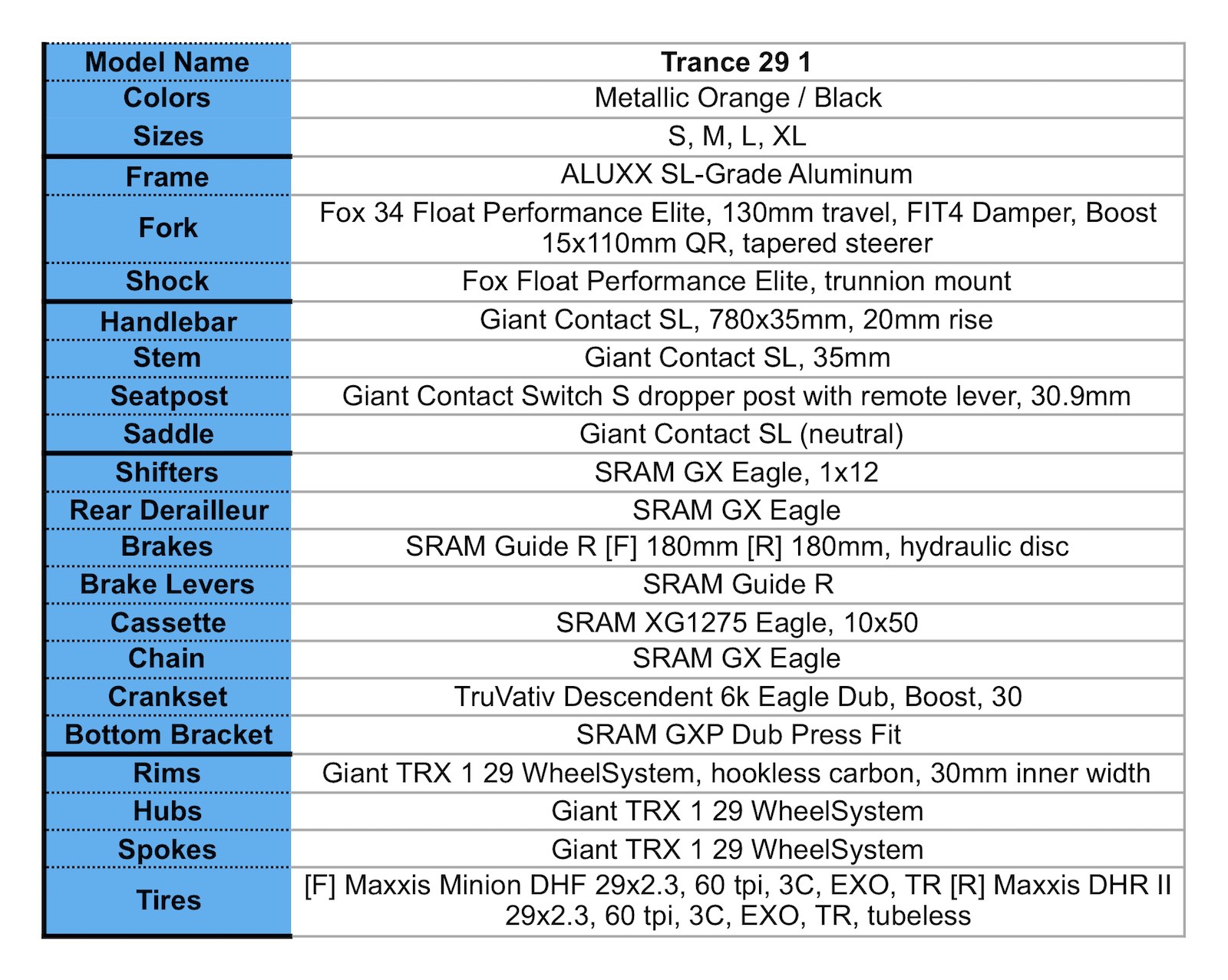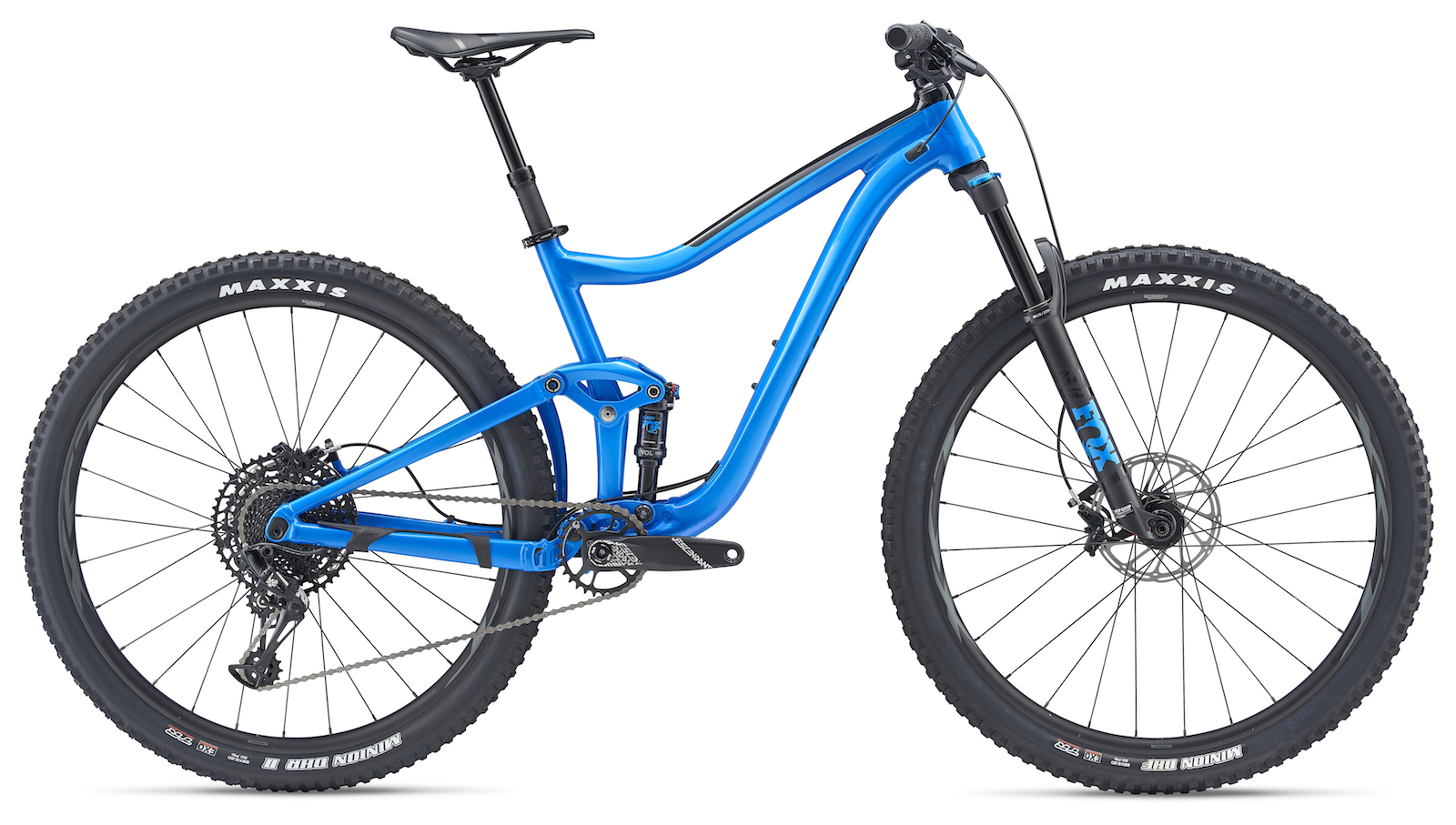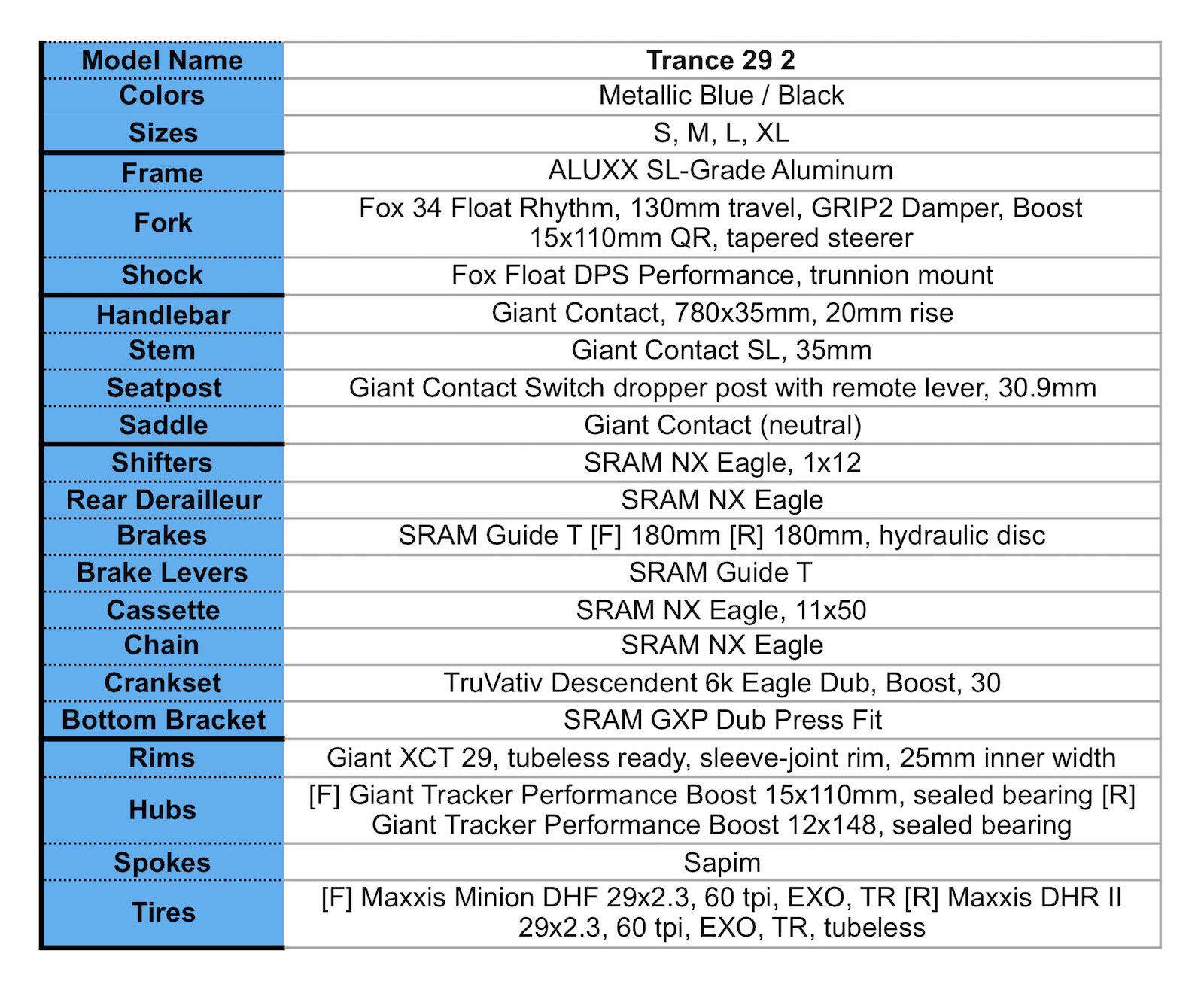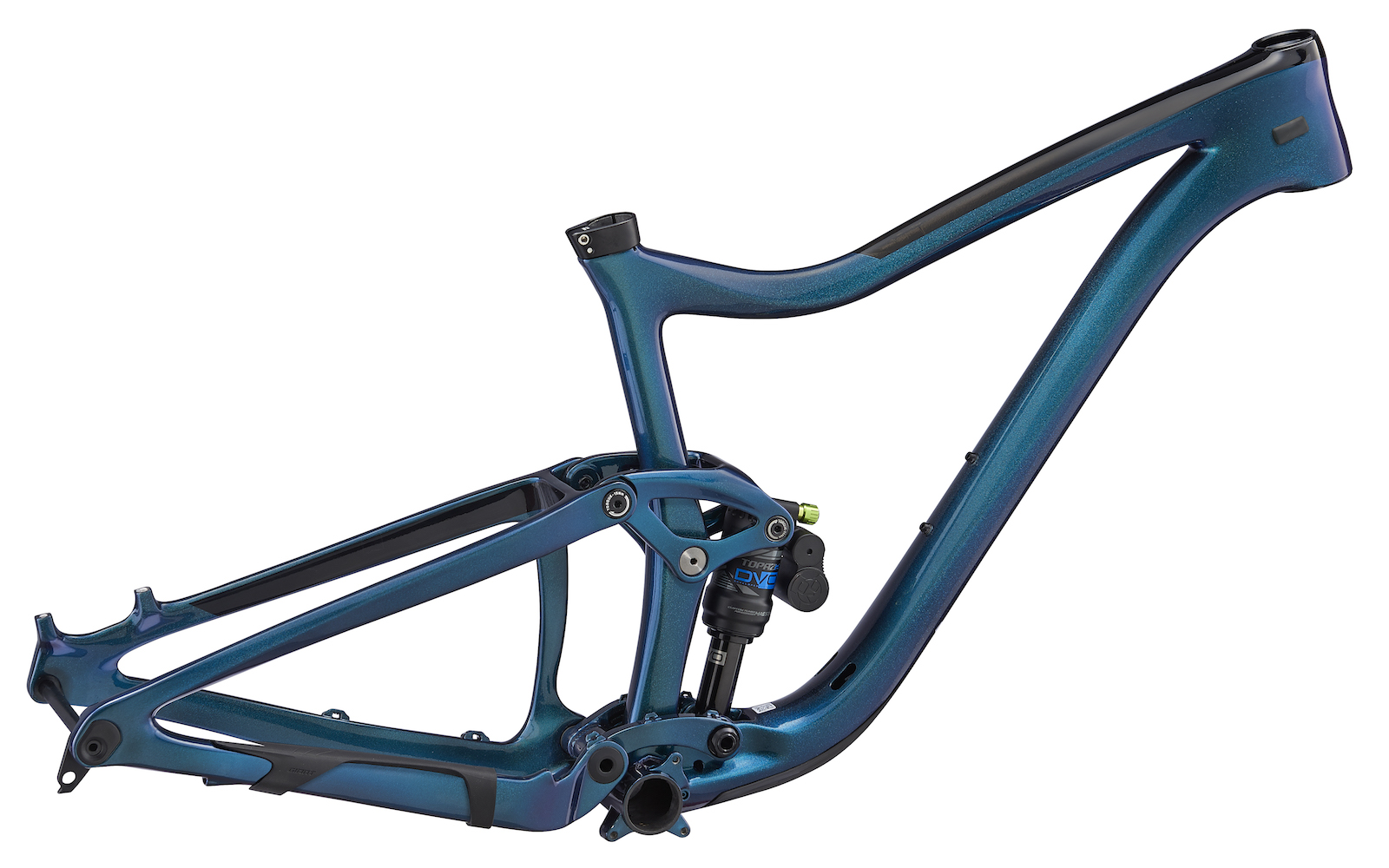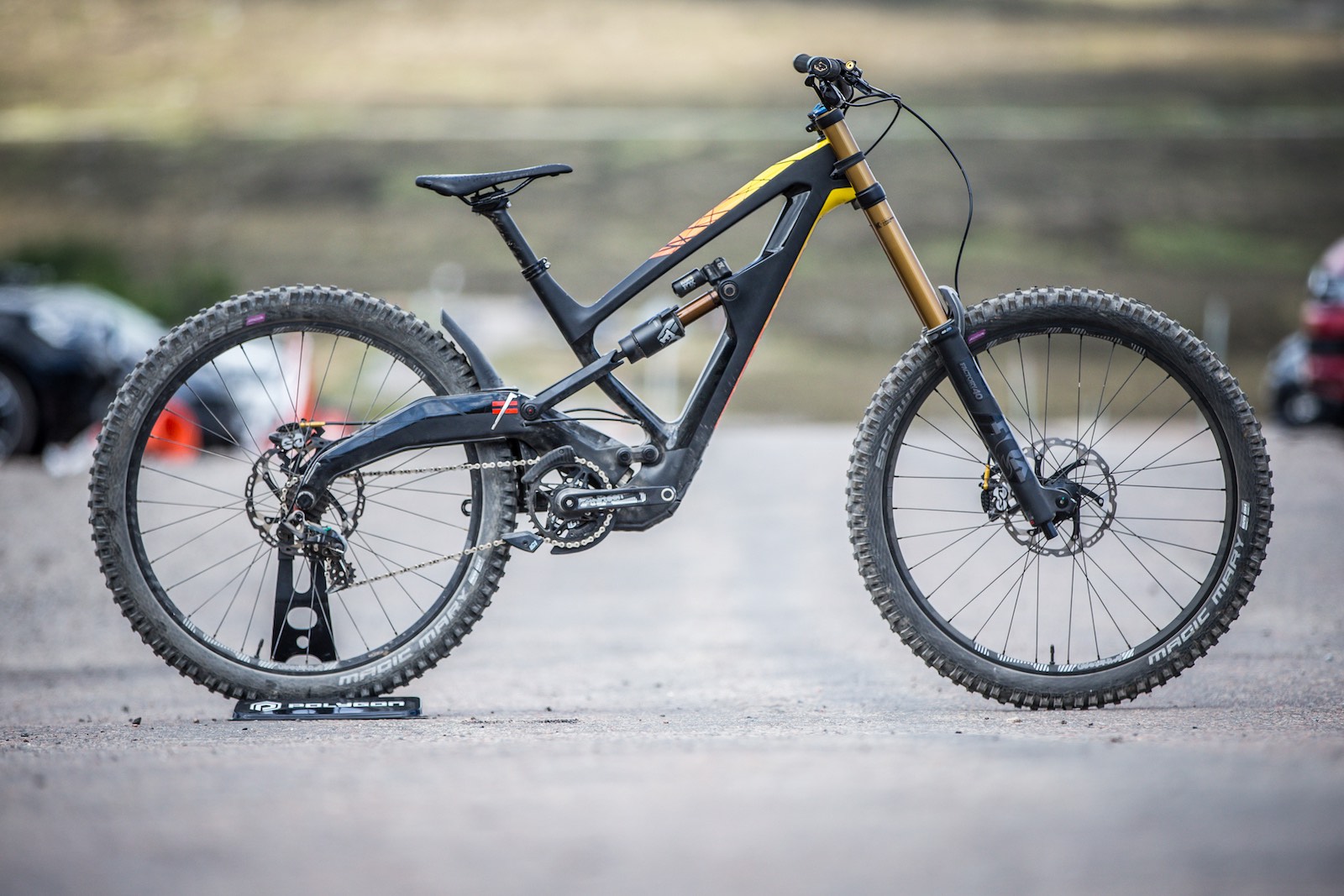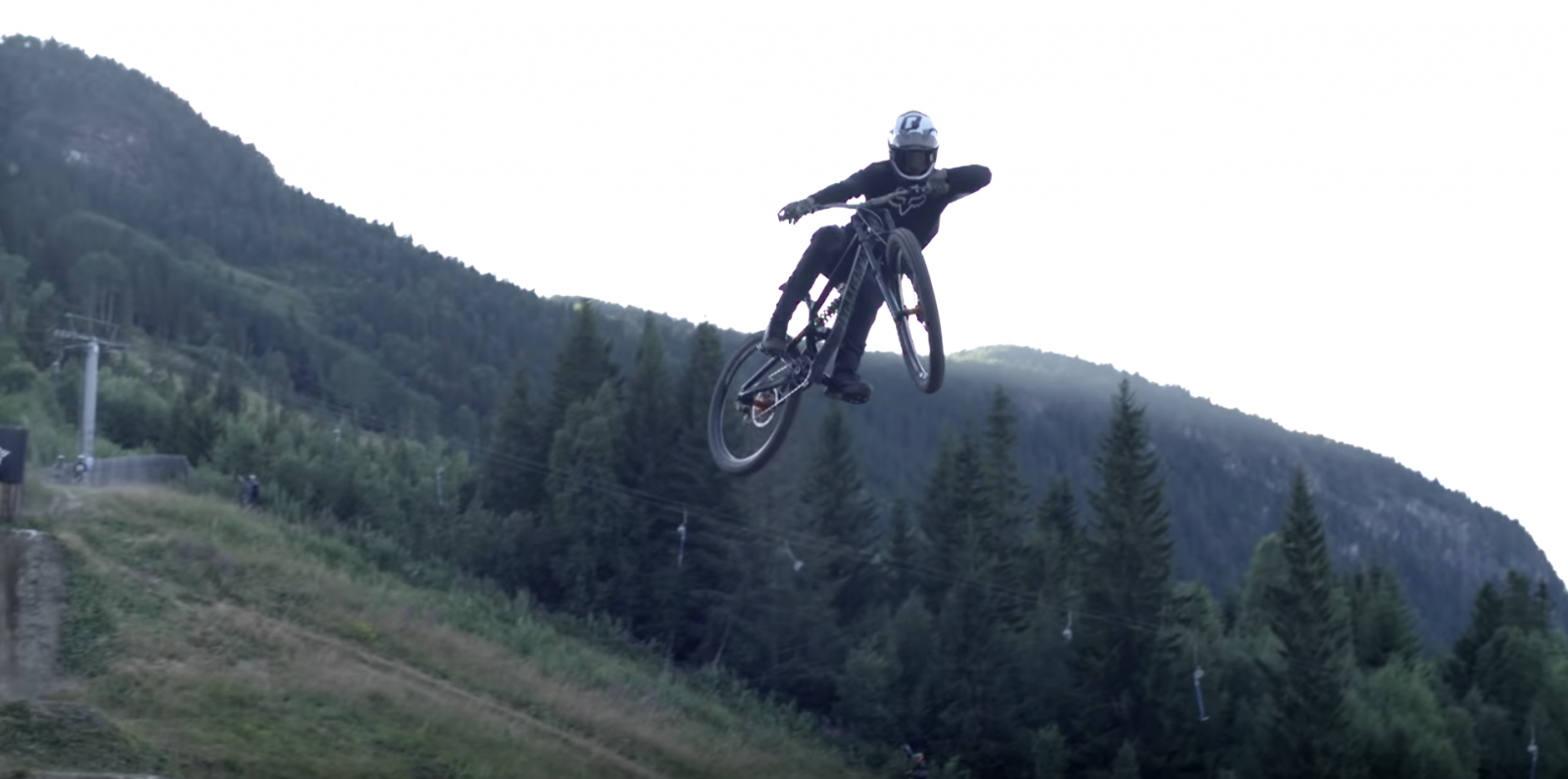Giant just presented the seventh generation of its bread and butter trail bike, with which the Taiwanese brand returns to the 29″ wheel format. For 2019, the new Trance 29, joins the current 27.5″ Trance as the result of 2 years of development and in addition to the larger wheel diameter, offers several updates that we will discover in this article. We were at the official presentation of Trance 29 that took place in Italy, more precisely in Santa Caterina di Valfurva, during which we had the opportunity to test it in two days of intense riding on the alpine trails of the Valtellina area. Steep and technical tracks go well with the updated characteristics of the new Trance 29 – aggressive and well tempered.

Details
Frame material: unidirectional carbon fiber or aluminum alloy 6011
Wheel format: 29″
Variable geometry: no
Front / rear stroke: 130/115mm
Rear hub: 148×12
Front hub: 110×15
Shock absorber: trunnion 165x45mm
Drivetrain: 1×12
Derailleur attachment: no
Bottle holder: yes
Availability as frameset only: yes
Static analysis
New geometry, an up-to-date suspension system and a frame available in carbon or aluminum alloy, depending on the spec level. During the presentation we rode the flagship bike, called Advanced Pro 0. Advanced indicates that the front triangle is made of carbon, Pro indicates that the rear end is also carbon while 0 identifies the most valuable package in the whole range. The new Trance 29 uses a specially designed frame and it is an evolution, not an adaptation, of the 27.5″ version. Kevin Dana, with Giant for 16 years and responsible for the design of the Trance, since its first model, has led the development through several aluminum prototypes in the last two years to get a modern, high performing yet fun bike.
The Maestro suspension system has been completely redesigned with an emphasis on offering a compression curve different from the 27.5 version, with a more plush and linear feel and a sensation typical of having more travel than the actual 115mm. The result is excellent sensitivity on small bumps and excellent behavior in response to bumps in rapid succession, where the suspension is always active and dealing with directional changes without going into crisis mode. Anti-squat and anti-rise have also been optimized to improve stability during pedaling and to make the impact of the braking as neutral as possible.
Bryson Martin of DVO Suspension has contributed to the realization of the new Maestro system. He has been working with Giant for about ten years, since he was still at Marzocchi, before starting his own company. For the last two years, for the construction of the new Trance 29, he has taken this collaboration to a higher level, working to create suspension specifically dedicated to the Advanced Pro 0 set-up. The shock absorber is the new Topaz 2 T3, equipped with a trunnion mount. It saves space and consequently provides an improved leverage ratio (2.55:1) thanks to its 45mm stroke. It can be adjusted in three positions by means of a lever that selects descend, traverse and climb modes. The main update compared to the previous model is the proportion between the two air chambers, with the negative one gaining volume. To achieve the best results from the Trance 29 suspension system, Bryson worked with Giant engineers on over a hundred combinations of shim stacks and air volumes. Of these numerous combinations, four were selected, one for each size, with varying tunes and different spacers to offer the same performance to riders with different weights. These settings were subsequently requested by FOX for the production of the shock absorbers of the other fittings.
The upper linkage plate is made of carbon fiber with a dedicated process called the Advanced Forged Composite Technology. With this technology, Giant superimposes unidirectional fibers in different directions to create a solid and rigid structure from every angle. The fibers are glued using a custom resin developed by Giant who, is one of the main producers, globally, of carbon-based bikes in the cycling sector. The molds inside which the connecting rods take shape are subjected to very high pressures and are placed in high temperature furnaces to harden the resins. In this way, Giant is able to make components with a higher resistance than aluminum or carbon made using the traditional method, but with a weight of less than half of the same components made from aluminum. The carbon fiber top link is featured on all the frames in the Trance 29 range, both those in carbon and those in aluminum.
The lower linkage plate is made of ALUXX SL aluminum alloy, mainly based on a 6061A alloy and developed by Giant to optimize weight and strength. This is the same alloy with which the aluminum frames are made. The linkage is forged into two pieces and then welded together. It also includes cable guides for the drivetrain cable and the brake hose, guiding them to the rear end in a clean and tidy manner.
The collaboration with DVO Suspension did not stop at the development of a rear shock, but also led to the creation of a new version of the Sapphire, redesigned specifically for Trance 29, but soon available also in the aftermarket. The new Sapphire is equipped with 34mm stanchions instead of the 32mm ones found on the previous version. To best match the geometry of the Trance 29, Bryson has designed four different fork crown prototypes to obtain different offset options: 42, 44, 48 and 51mm. Following numerous comparative tests the 44mm version was chosen and consequently, FOX forks on other trim levels have the same offset. The Sapphire features the “OTT” system that allows you to preload the negative spring to adjust the off the top sensitivity of the fork.
Giant has equipped all the settings of the Trance 29 of the new model of its TRX wheels that mount a completely redesigned carbon rim to be more robust and slightly less rigid than the previous model. Thanks to a channel that’s been revised in thickness and quality of carbon, it also gets lighter. The inner rim width is 30mm and the hookless rim profile is now a stout 3.5mm wide. Having also tried the previous model I can confirm that the improvement in terms of robustness and comfort of the new TRX is really perceptible.
The Advanced Pro 0 version under test mounts the TRX0 version which represents the top of the range of new Giant wheels, equipped with 28 Sapim Super spokes on each wheel and hubs derived from the DT Swiss 240, with the Star Ratchet engagement. All other fittings are equipped with the TRX1 version with Sapim Laser spokes and hubs derived from the DT Swiss 360, also with a Star Ratchet engagement.
The tubeless tires are a 2.3 “Maxxis Minion with EXO Tubeless Ready carcass and a 3C compound. A DHR II at the rear and DHF at the front, a choice that rewards the aggressive, yet fun personality of the Trance 29. The type of casing, which I know very well and I often use, is appropriate for the intended use, but for the record I have to say that during the test I cut the shoulder one day up at the front and the next day on the rear one, badly enough to have to replace them both. It should however be considered that the high-altitude trails on which we tested Trance 29 are characterized by a considerable amount of very sharp, loose rocks.
The drivetrain of the Advanced Pro 0 is a SRAM X01 Eagle and the entire range adopts Eagle 12-speed, drawing from different groups based on the list price of each set-up. The Advanced Pro 0 in test is the only one to mount a chainring of 32 teeth, very suitable for the intended use given the combination with the 10-50T cassette, while all other bikes offer a more gentle range, thanks to 30 tooth chainrings.
The dropper seat post has 125mm of excursion, specifically our test rig had a RockShox Reverb Stealth with a 1x paddle, while all other spec levels are equipped with the Giant brand product, a Contact Switch S. The frames seat tube is quite compact, and grants the use of seatposts with more travel. In the picture below, we also note the particular two-screw seatpostcollar, incorporated into the frame design thanks to the dedicated seat tube shape.
Even the saddle represents a novelty within the range of Giant components. This is the Contact SL model made with foam padding and 30% more impact absorption capacity than the previous model. The version I used is the Neutral which is different from the other versions, allowing a neutral, centered position compared to the Forward version, dedicated to those with more climbing discipline, where the riding position is more forward oriented, and to the Upright, dedicated to downhill discipline, where the position is rather vertical. The quality of the saddle is excellent and, although the judgment regarding a saddle is strictly personal, I found myself perfectly at ease.
The handlebars and stems of the Advanced Pro 0 set are entrusted to Truvativ with two products in the Descendant series with a 35mm diameter, 20mm rise and 780mm wide carbon handlebar (cut compared to the stock 800mm) and a 40mm long stem. All other fittings use a Giant Contact SL combo, also in 35mm standard, with a 780mm wide handlebar and 20mm rise and as 40mm length stem. The choice of a 40mm stem is modern and very appropriate. It represents a breaking point with the past for Giant who has always preferred longer stems for their trail and enduro bikes. The choice of the relatively short stem combined with the geometry of Trance 29 is something that we will analyze in detail later.
The braking on the entire Trance 29 range are SRAM Guides, in different versions depending on the equipment but all are specced with 180mm diameter Centerline rotors. The RSC version mounted on the Advanced Pro 0 has sometimes proved to be difficult compared to the rather aggressive riding situations to which we subjected them during the two days of testing, with some problems of fading, lengthening of the stroke and consequent decrease in performance.
The routing of the cables is internal and is made with care since there is no noise generated by their movement inside the frame. The entrances are equipped with gaskets that seal the frame. Once the cables have entered the area behind the head tube, they exit near the lower linkage, as indicated below, and end their journey at the rear triangle with the rear brake hose remaining external and the shifter cable going internal
The frame is completed with the dedicated protection in sturdy rubber, pre-formed to effectively adapt to the shape of the frame. The rear end is protected from impacts of the chain both on the seatstay and chainstay, while the down tube has an abundant protective shell, which is not present on the test specimen but will be standard on the bikes sold to the public.
Geometry
Giant has worked a lot on the Trance geometry to achieve the most balanced riding position possible and to guarantee aggressive attributes that offer downhill performance comparable to those of an enduro bike, but at the same time providing good climbing performance. The reach is longer than any other Giant model and is combined with a 40mm stem and a large handlebar for stability and control over the front end. The steering angle is quite slack in relation to the intended use of the Trance 29 and the combination with the 44mm offset results in maneuverability and precision. The length of the chainstay is quite short and the seat tube is positioned more vertically than the traditional geometry from Giant.
In action
As anticipated, the two days of riding during which we had our first experience with Trance 29 took place in Santa Caterina di Valfurva, partly on the trails used for enduro competitions and in large part on a trail at high altitude that from Forni glacier area and Pizzini refuge leads downstream, between very technical passages, challenging climbs, singletracks, rough and fast sections. An excellent testing ground for the intended use of the new crown jewel of the Giant house that aims to be, as stated by the designers, an aggressive and multi-purpose trail bike, able to satisfy even in some capacity for Enduro.
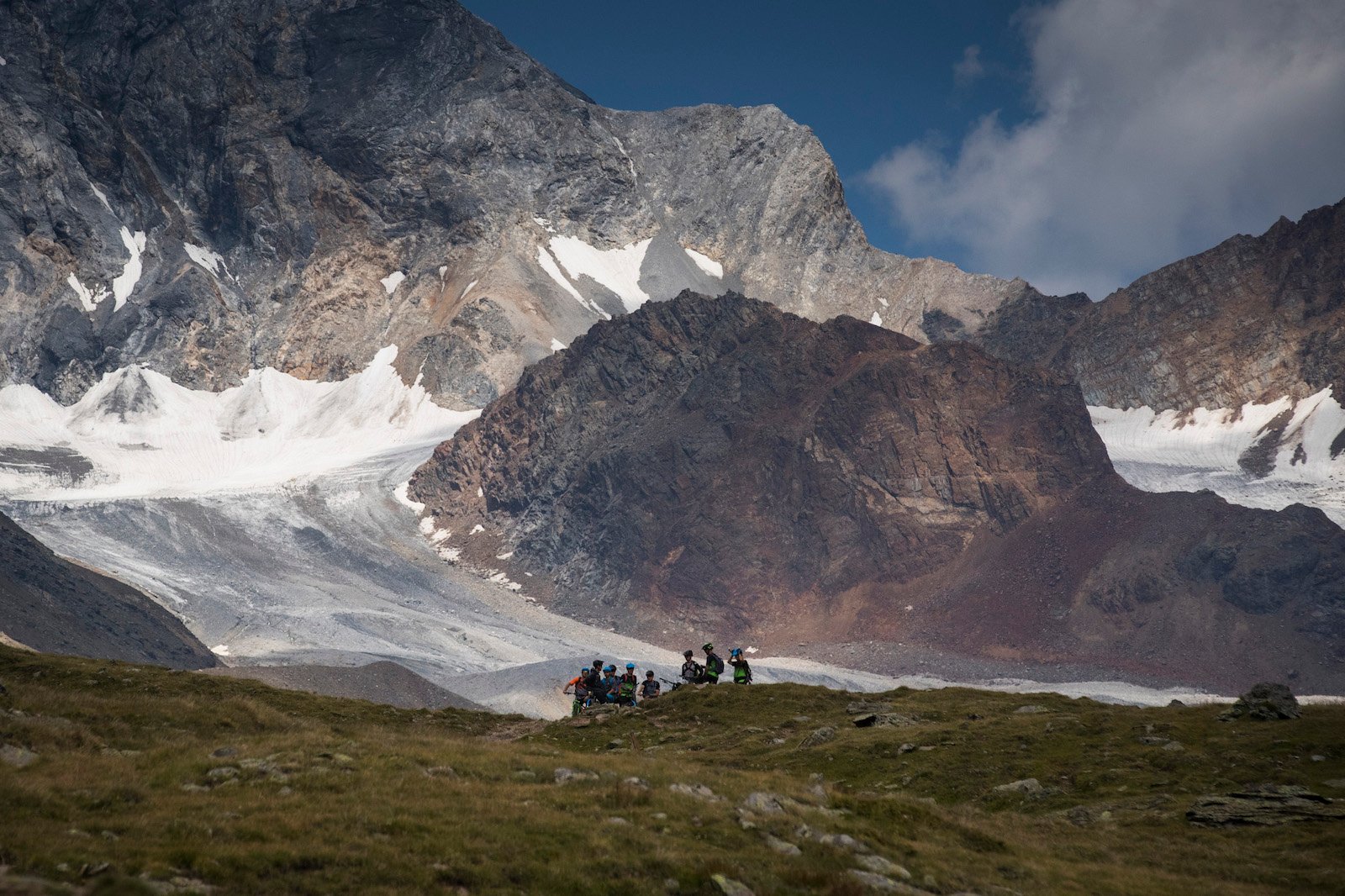
What is clear from the outset is that the geometry, although not extreme and still relatively safe, are definitely more aggressive and balanced than those of the Trance 27.5″, and provide a central, commanding, yet very natural riding position. The bike is very intuitive and easy to manage, thus allowing you to always feel confident and in full control, even in the most demanding situations.
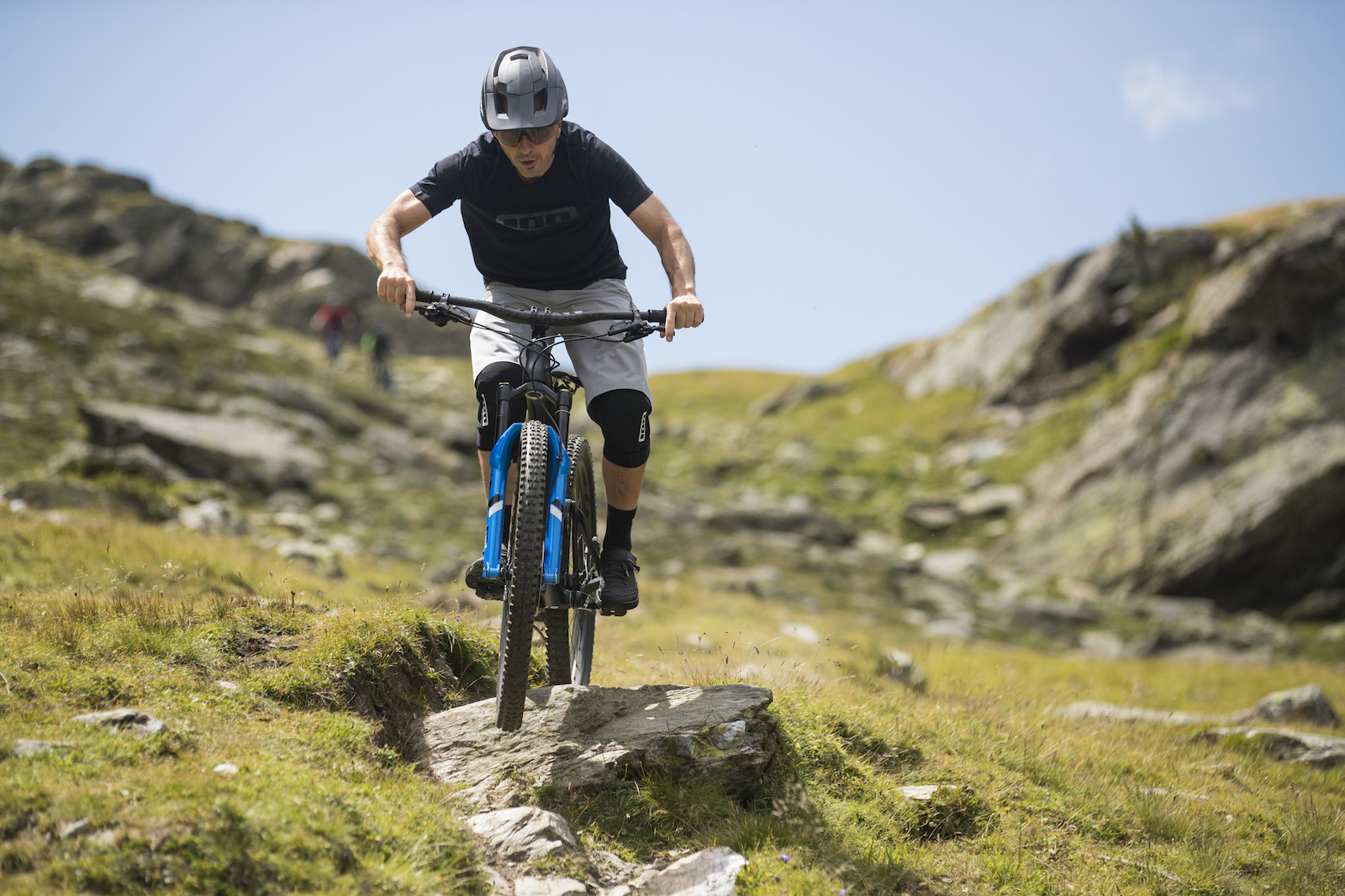
The majority of the difference in height we gained thanks to mechanized ascents, but throughout the different routes, the steep and bumpy uphill sections were numerous and quite challenging, which is why I cannot express an exhaustive judgment on the behavior of Trance 29 on long, grinding climbs. I can comment on its behavior on technical ascents. Despite the longer reach, the size is rather compact and the saddle angle is more vertical than the traditional Giant geometry but still quite slack. In general terms, the geometry provided a very balanced uphill riding position, but once on the steeps it’s necessary to move to the saddle’s point to balance the weight and continue to have control over the front wheel. Traction is always excellent and allows you to overcome challenging stretches with a lot of agility. The excellent stability of the renewed Maestro system does not require you to intervene with the hydraulics to get a good support. You can afford to climb with the lever in the descend position, which however is quite difficult to reach during the riding as it is positioned very close to the bottom of the bottle.

When descending, the word that best describes the new Trance 29 is balance. Equilibrium between the geometry and between the front and rear suspension provides qualities of absolute maneuverability and intuitiveness to the bike, with the rider perfectly balanced and centered. The declaration by Giant bats above its class is not only true in regards to the rear suspension, but for the general performance as well. The only situation in which Trance 29 is at all nervous, when compared to an enduro bike, is in very fast and rough sections, but not so much for the suspension system which managed hits in quick succession, and more due to the geometry, which is aimed at greater versatility in all riding situations.
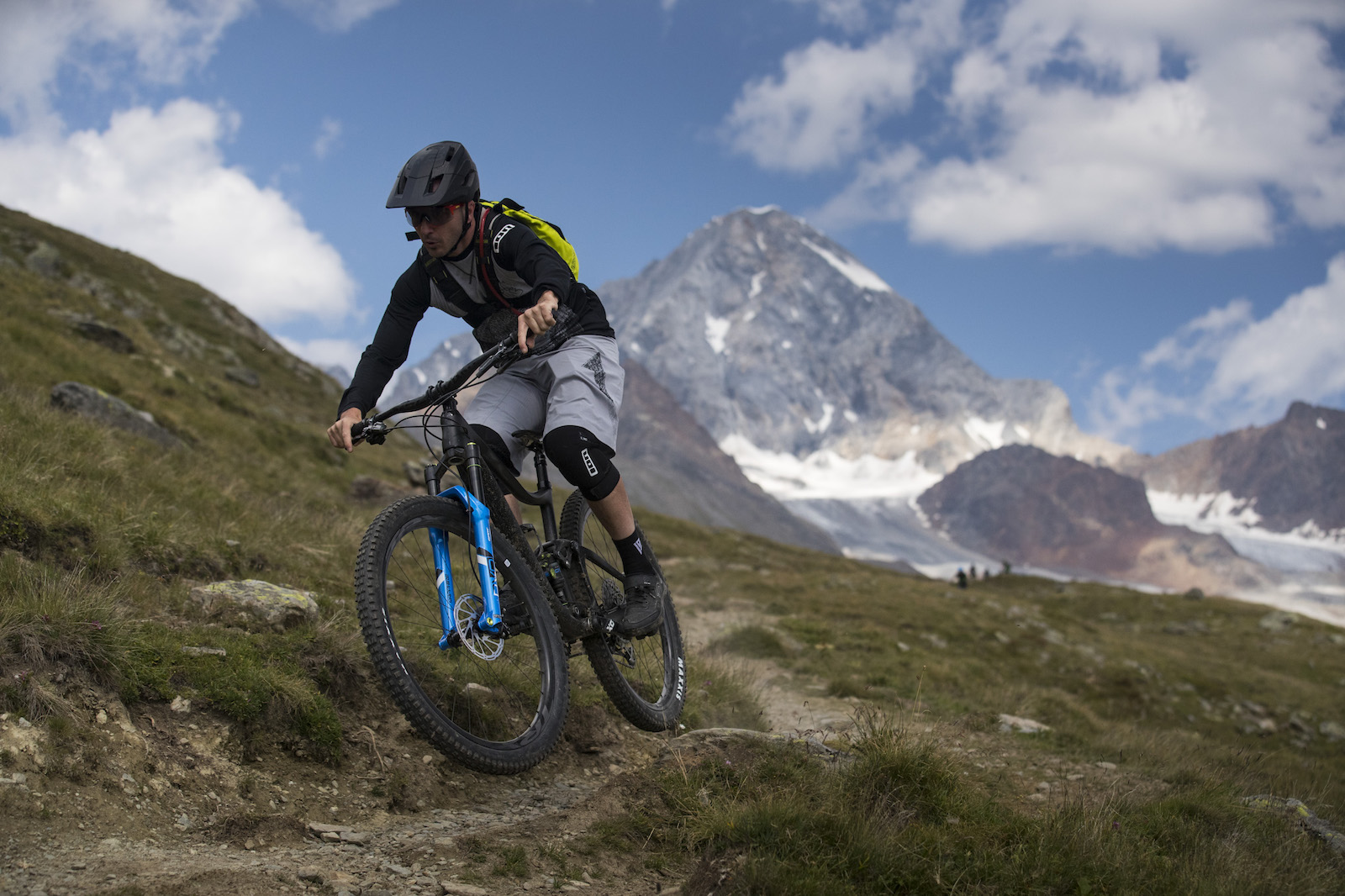
In the numerous very steep and technical sections we have dealt with, it proved to be incredibly manageable and precise, with a stable and planted front end, also thanks to the excellent behavior of the full-bodied Sapphire, and an agile and reactive rear end. In the uneven terrain it is instinctive to take full advantage of the liveliness of the suspension, play with line choice, and dare more than you would with a normal trail bike. The frame is rigid and transmits a pleasant feeling of solidity, thanks to the general silence of the bike that doesn’tt distract from your riding. Even the wheels, an in house product from Giant, seemed very valid: robust, rigid sideways but comfortable in bumpy terrain, taking the edge off.
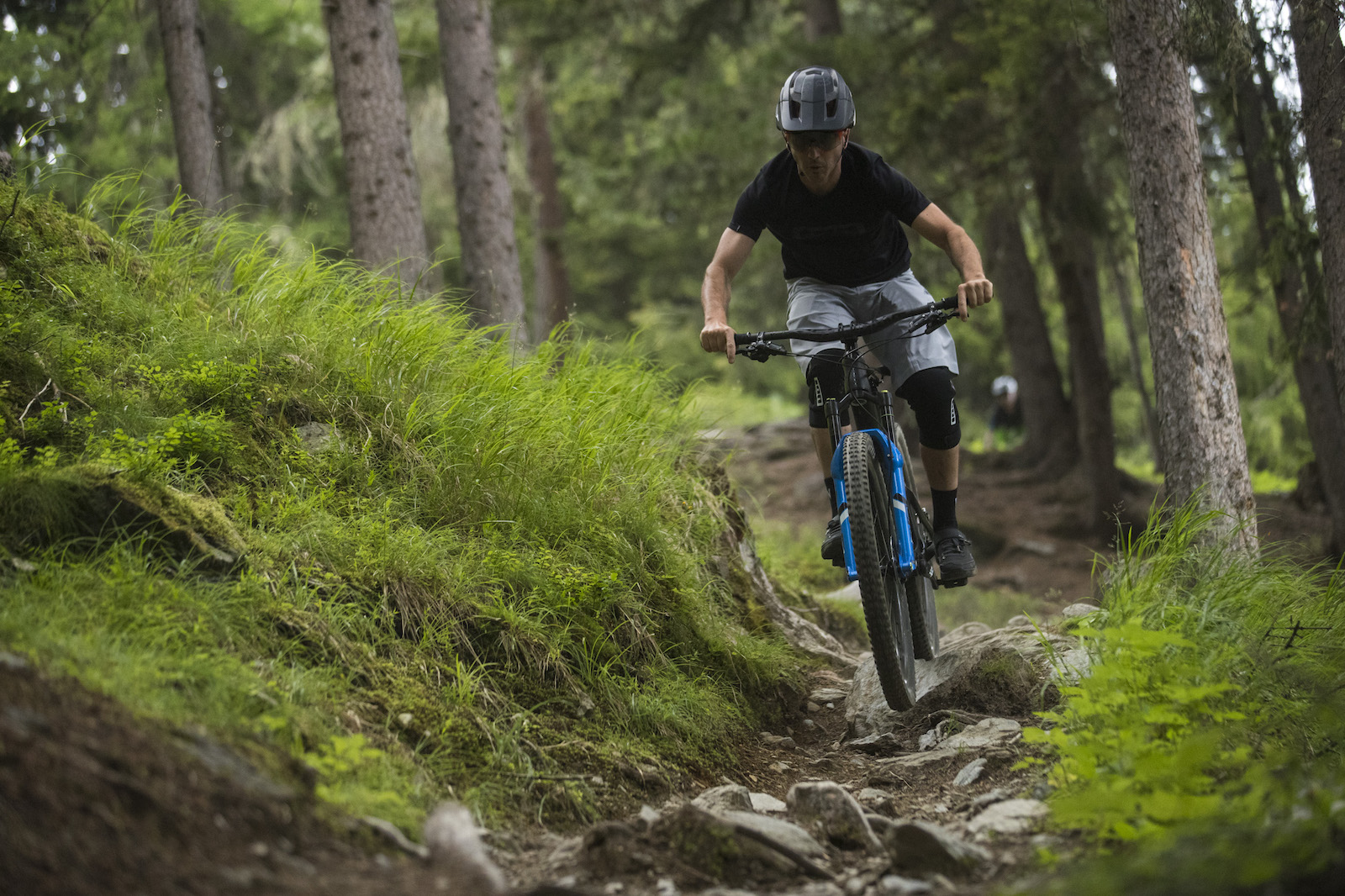
Conclusion
Giant is back to the 29-inch wheel format with a convincing and concrete base. They have updated the Trance project keeping all the distinctive features of their bestseller, but taking it to a higher level thanks to modern and balanced geometry, an excellent, well refined suspension system and a more aggressive stance that allows them to significantly increase the downhill performance while at the same time retaining the excellent climbing characteristics that were appreciated even on previous models.
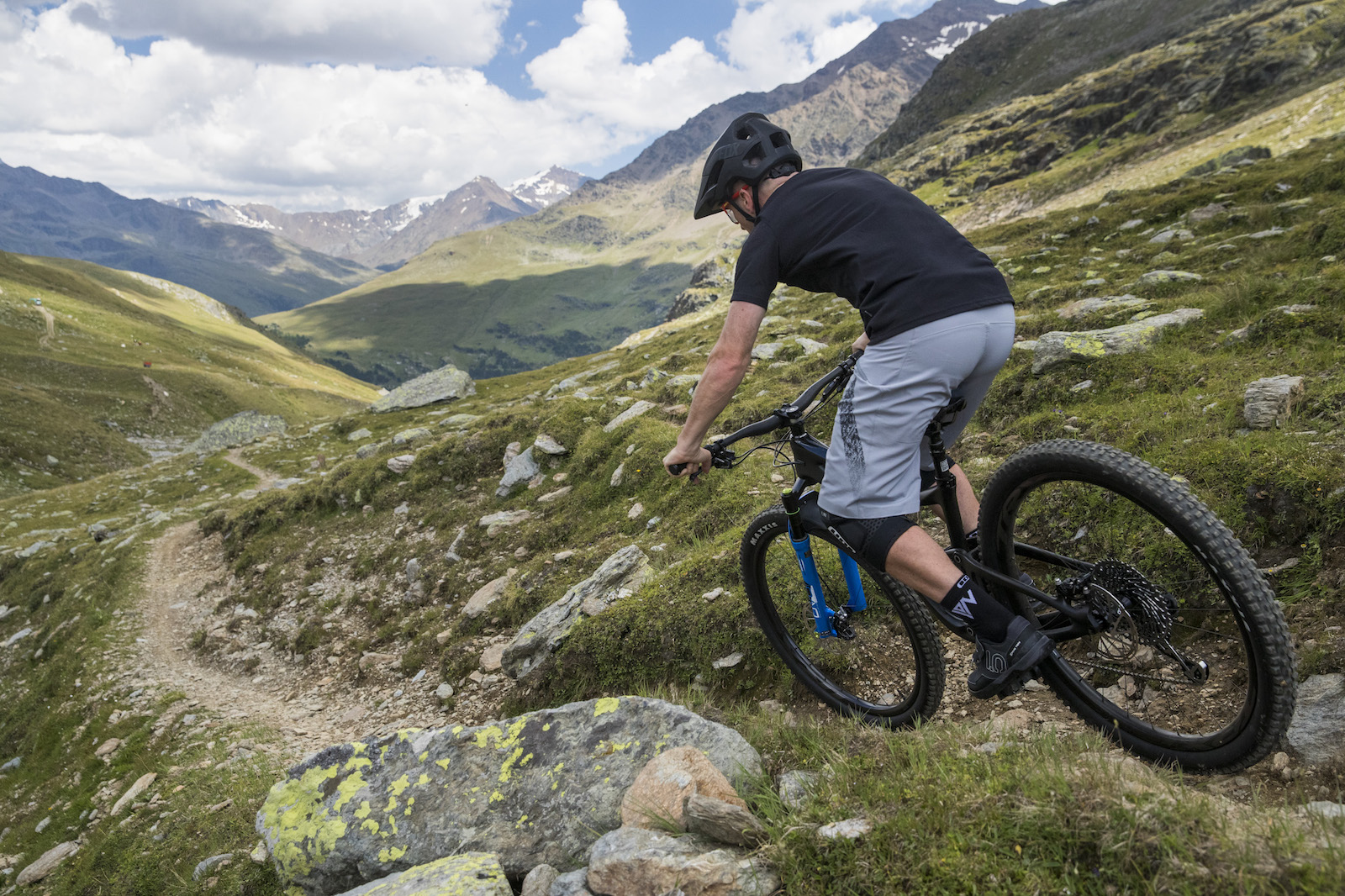
Spec and prices
Giant offers three different versions for the Advanced Pro version with a carbon frame and two versions for the platform with an aluminum alloy frame. Also available is the frame kit in a very special iridescent color, equipped with a DVO Topaz 2 T3 shock absorber. The carbon frame fittings will be available at the end of September while those with an aluminum alloy frame are already available.
Trance 29 Advanced Pro 0 – € 7.999
Trance 29 Advanced Pro 1 – € 4,799
Trance 29 Advanced Pro 2 – € 4,299
Trance 29 1 – € 3,899
Trance 29 2 – € 2,599
Trance 29 Advanced Pro frame – € 2.999

